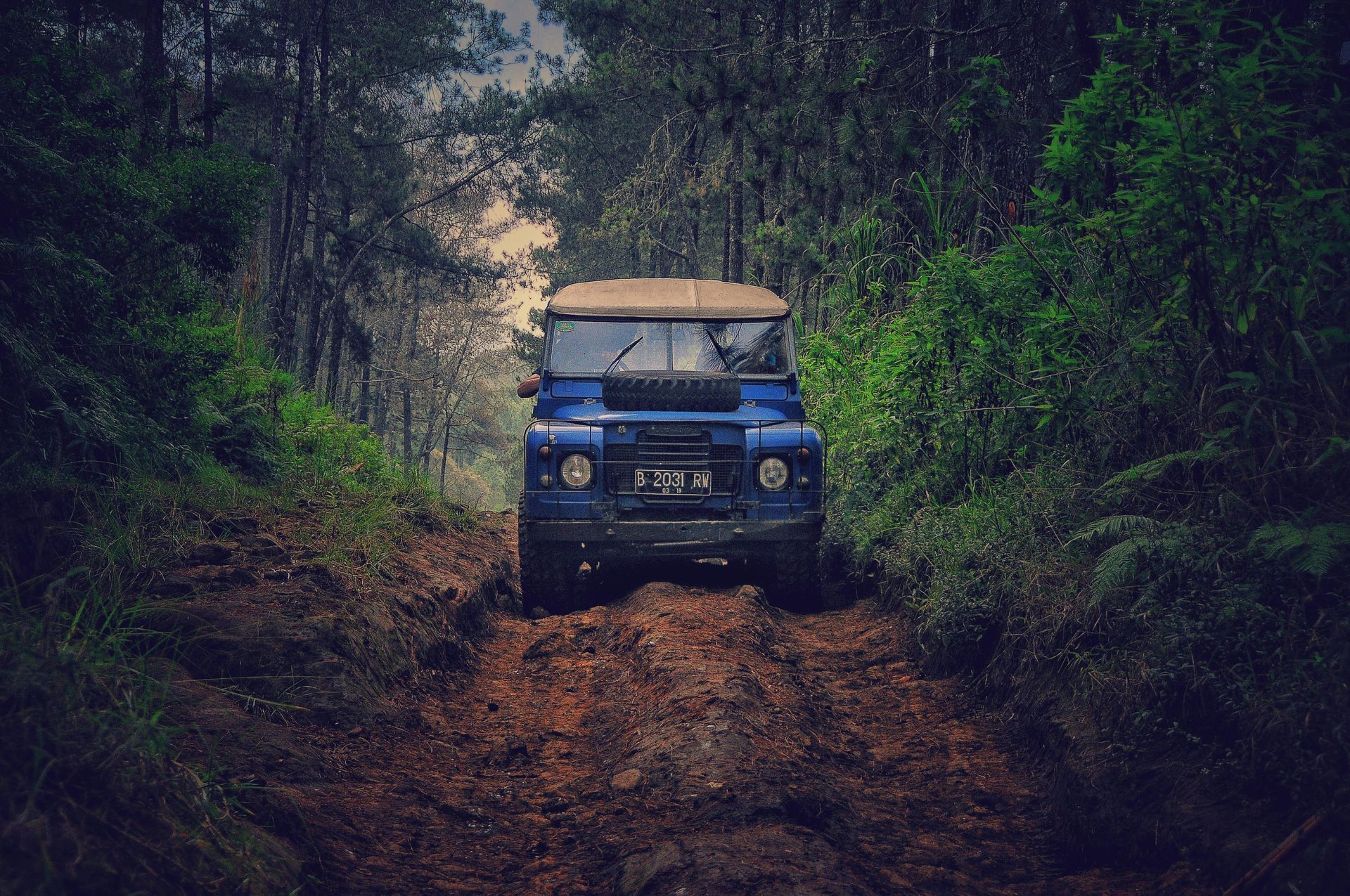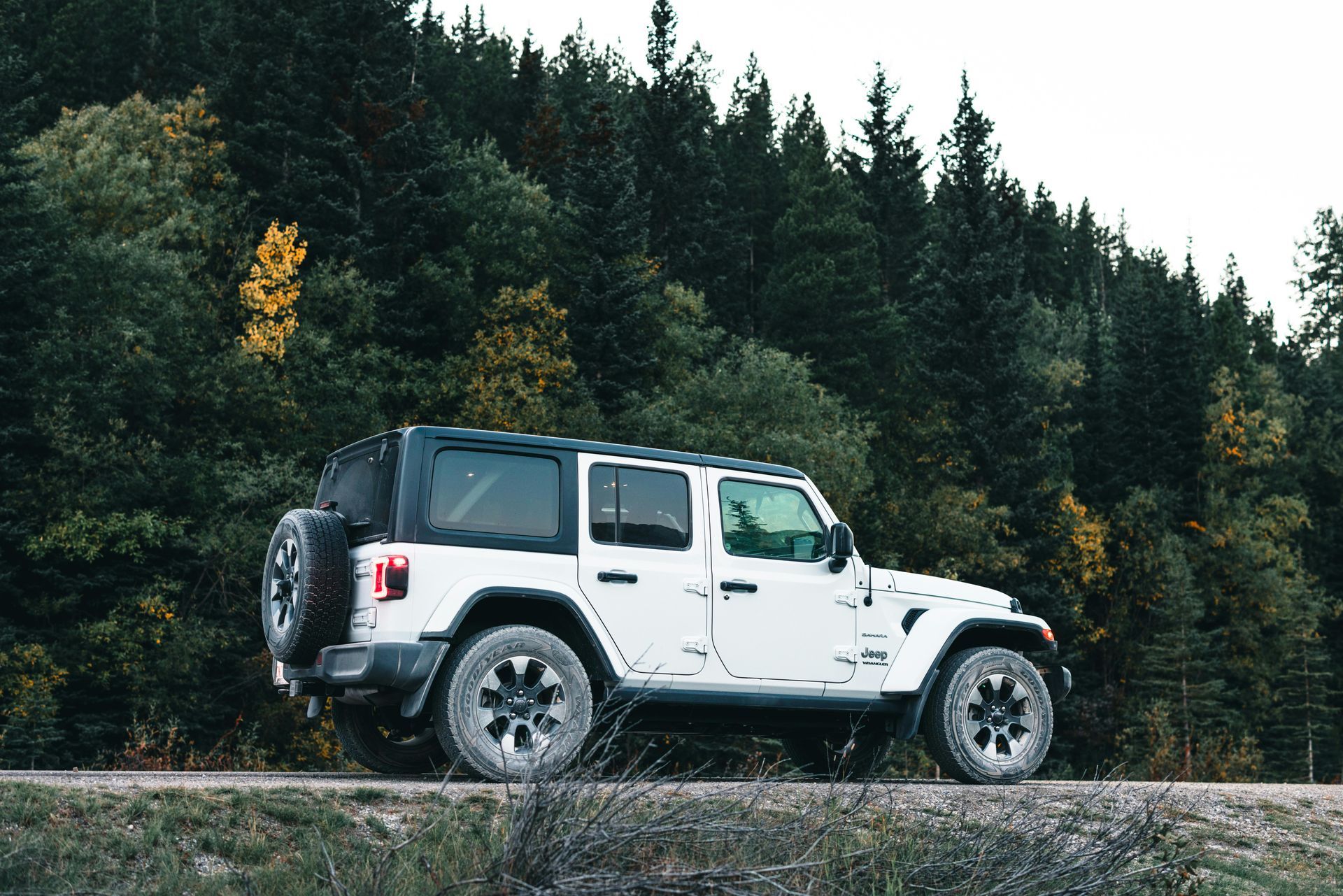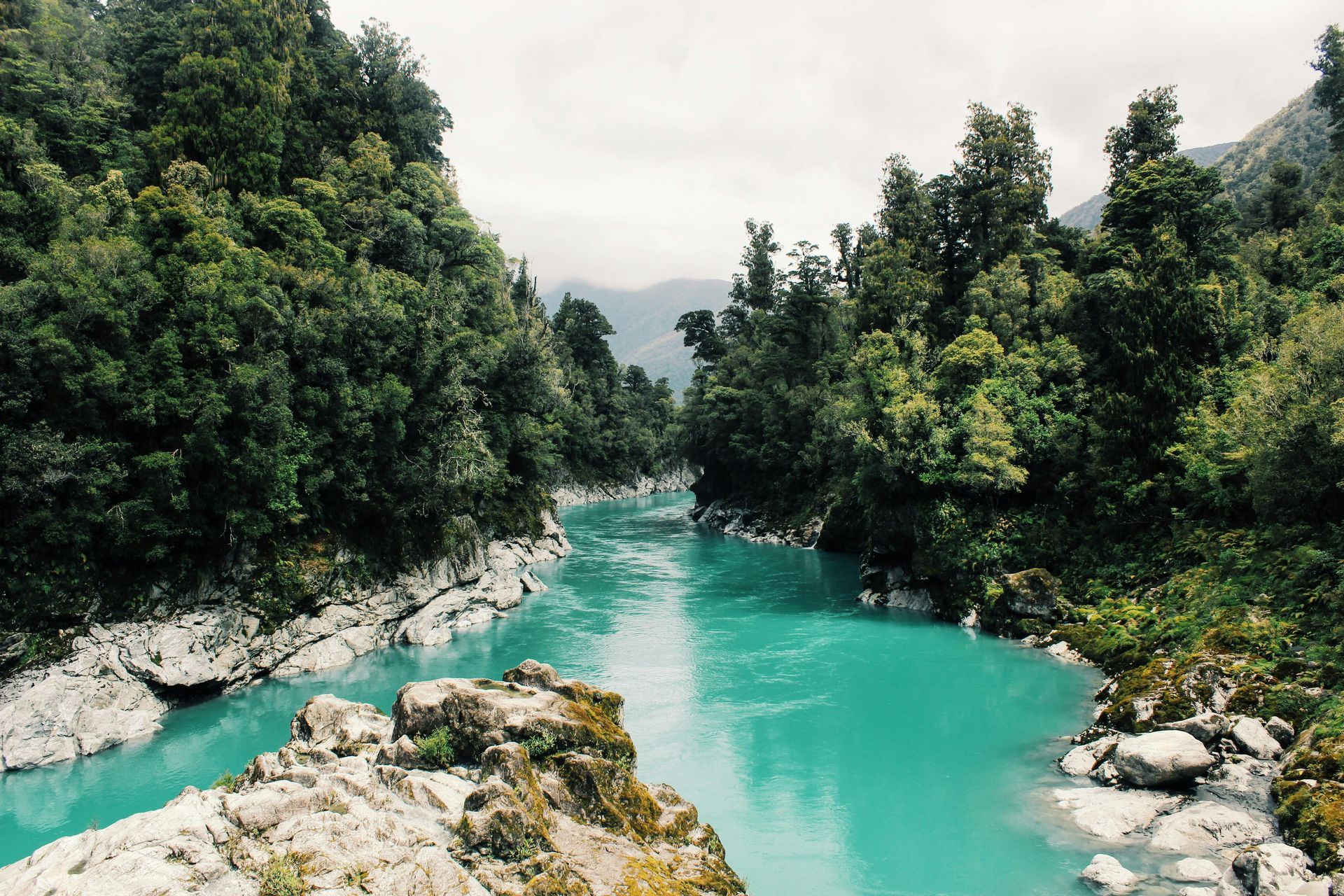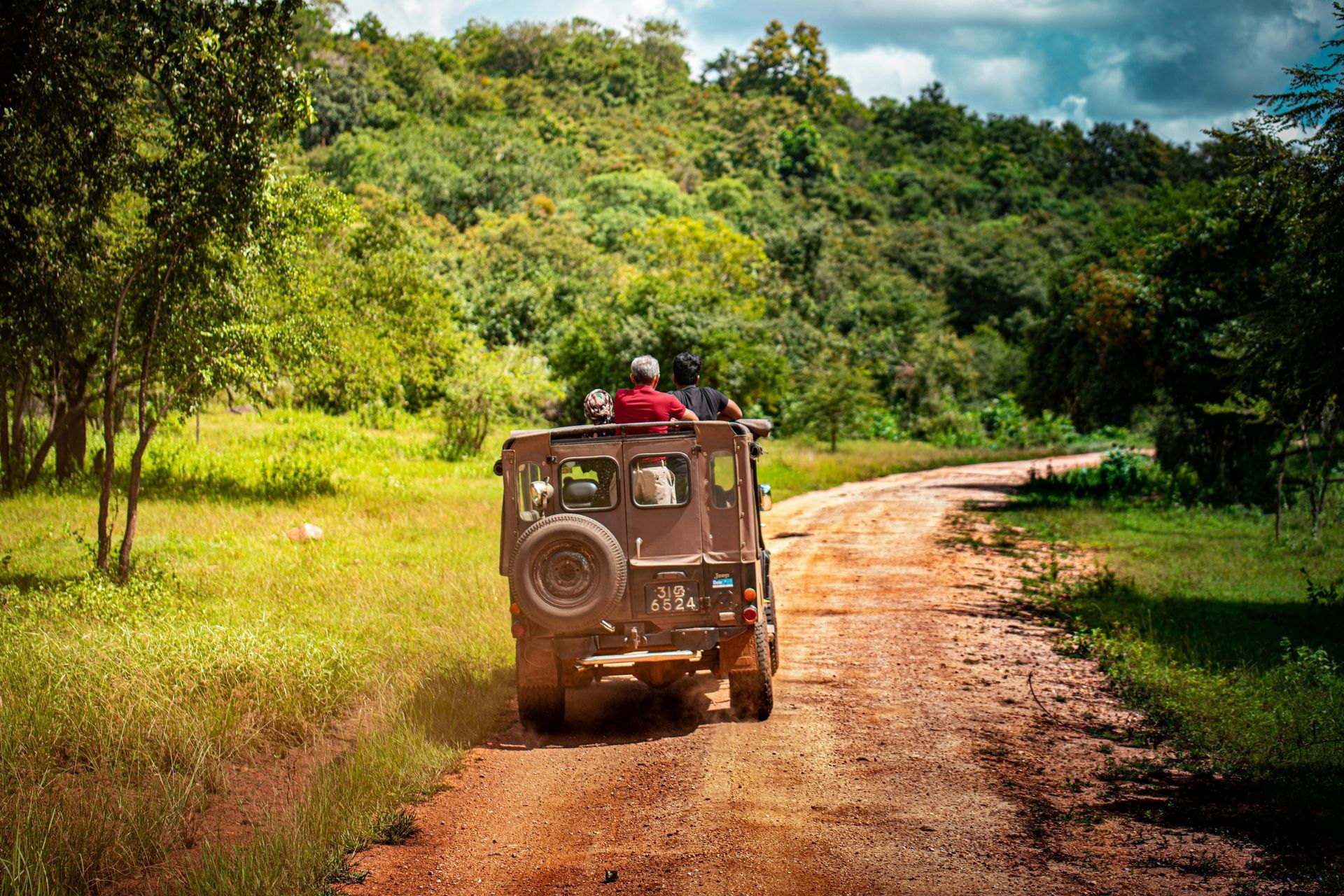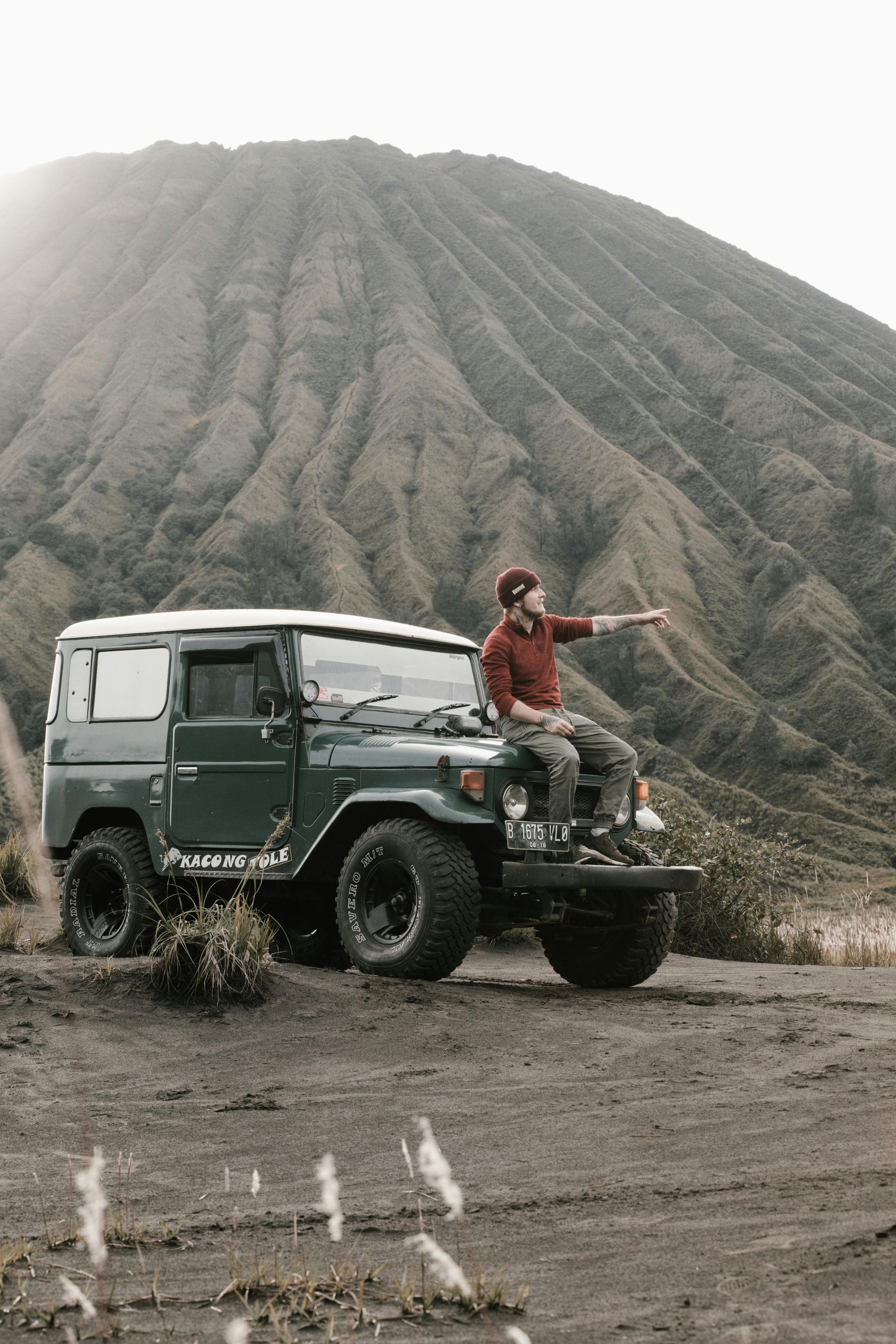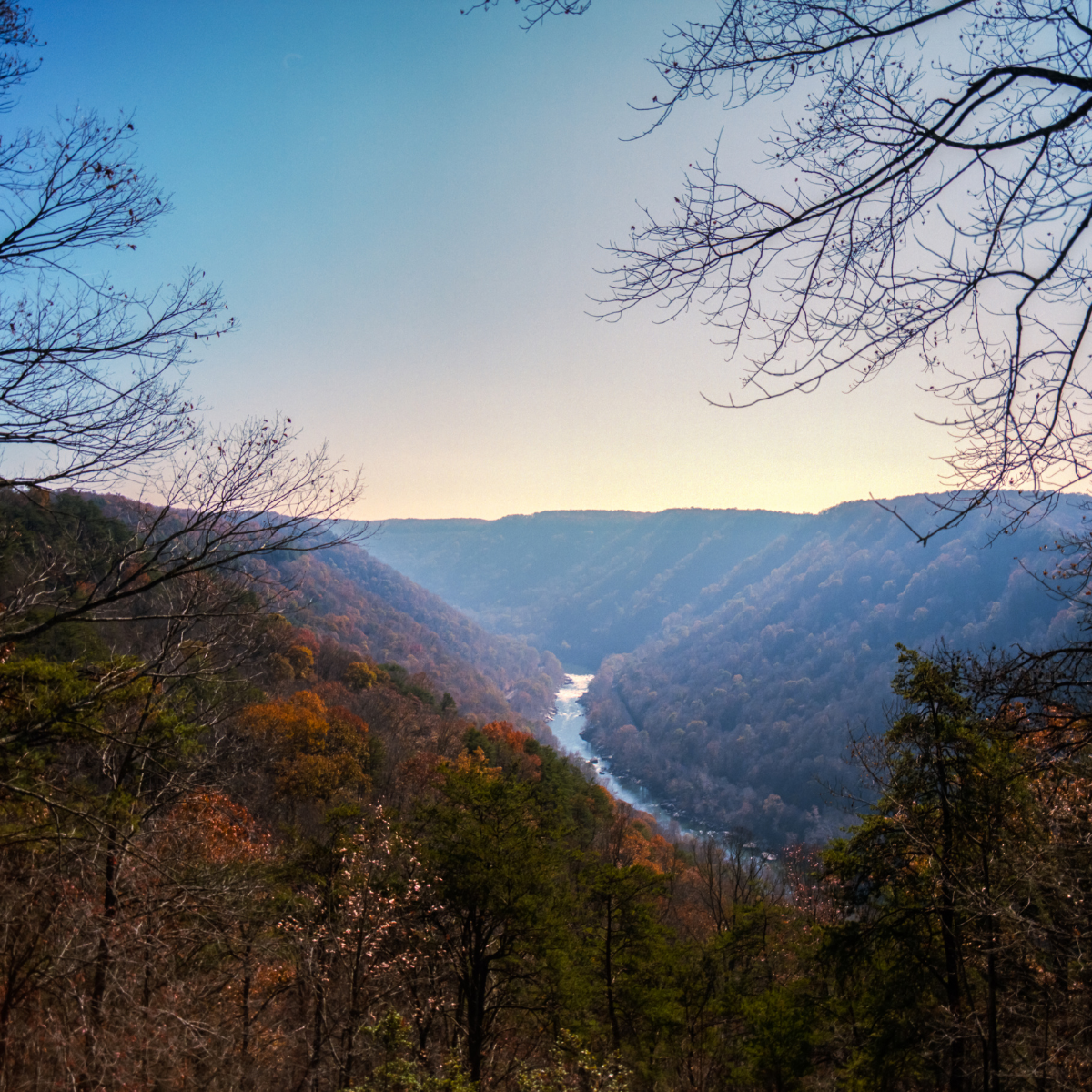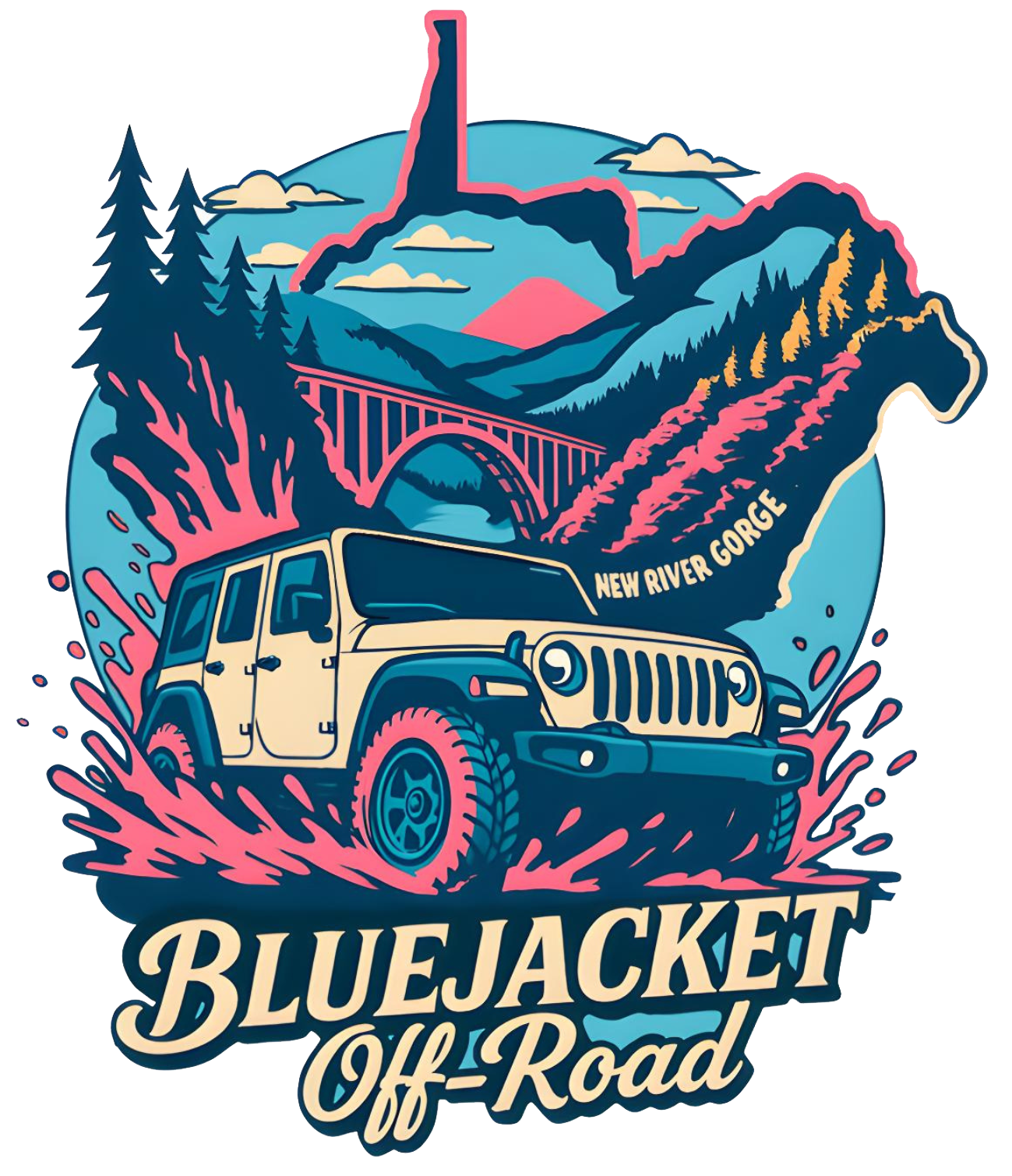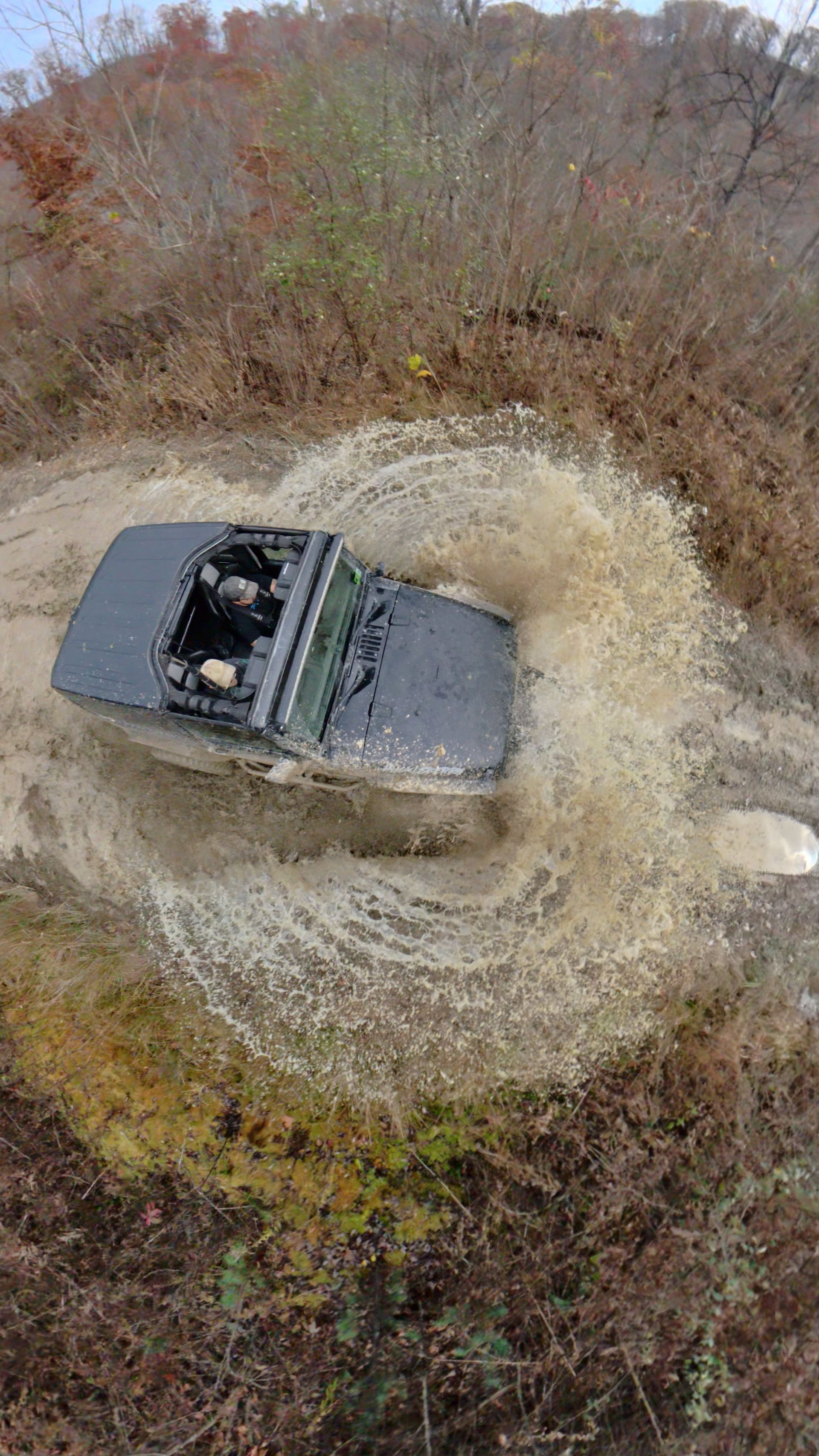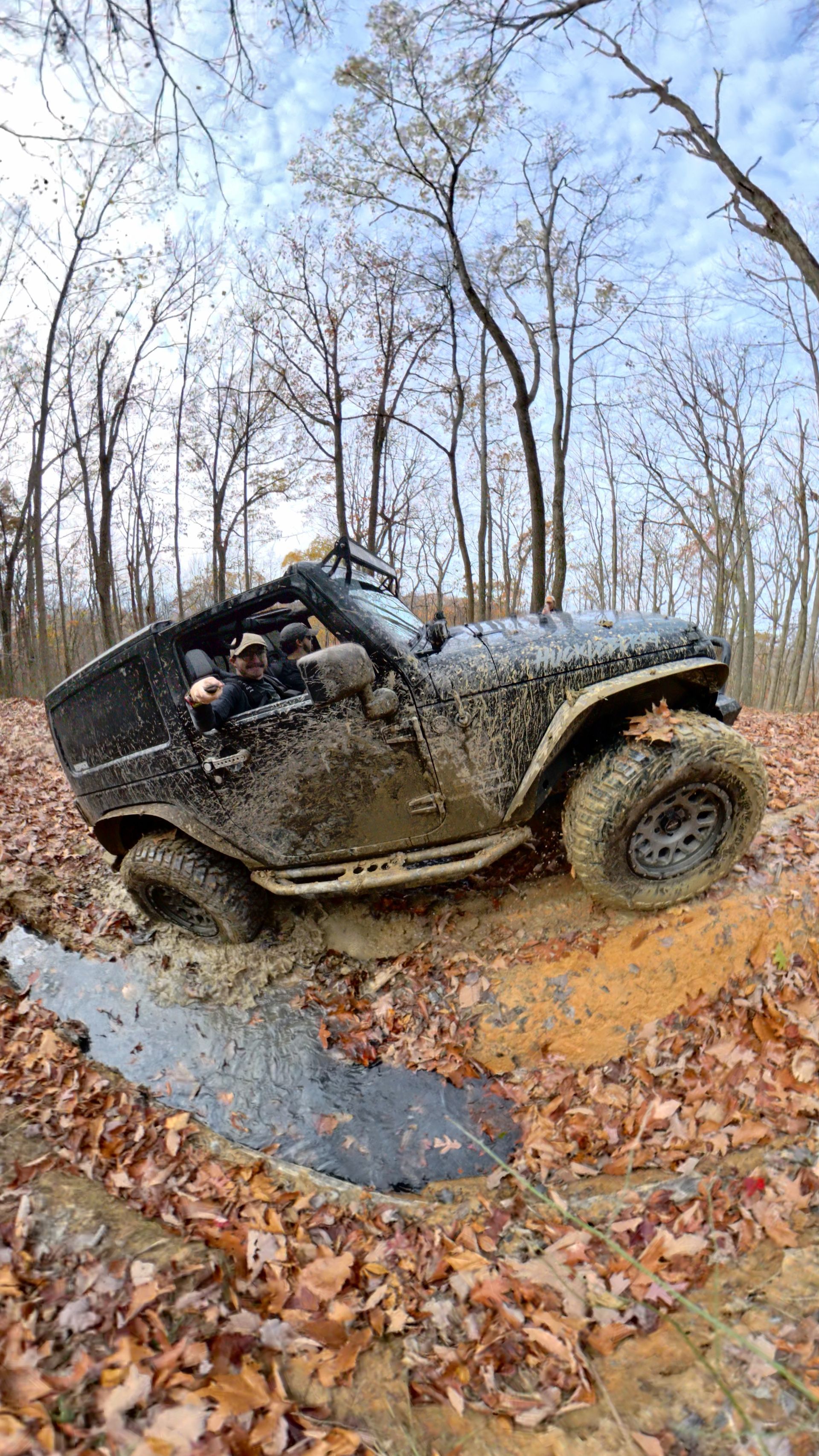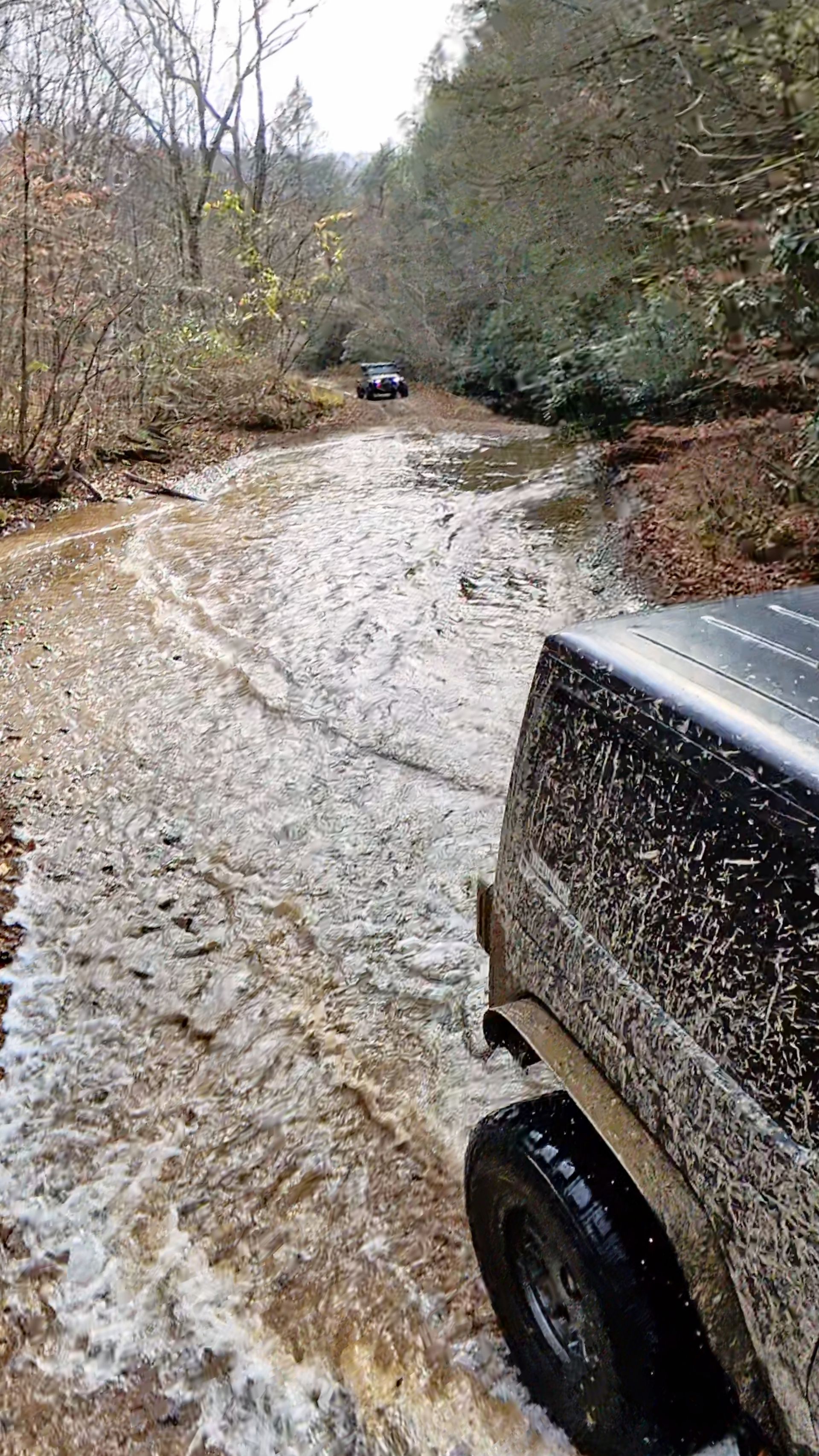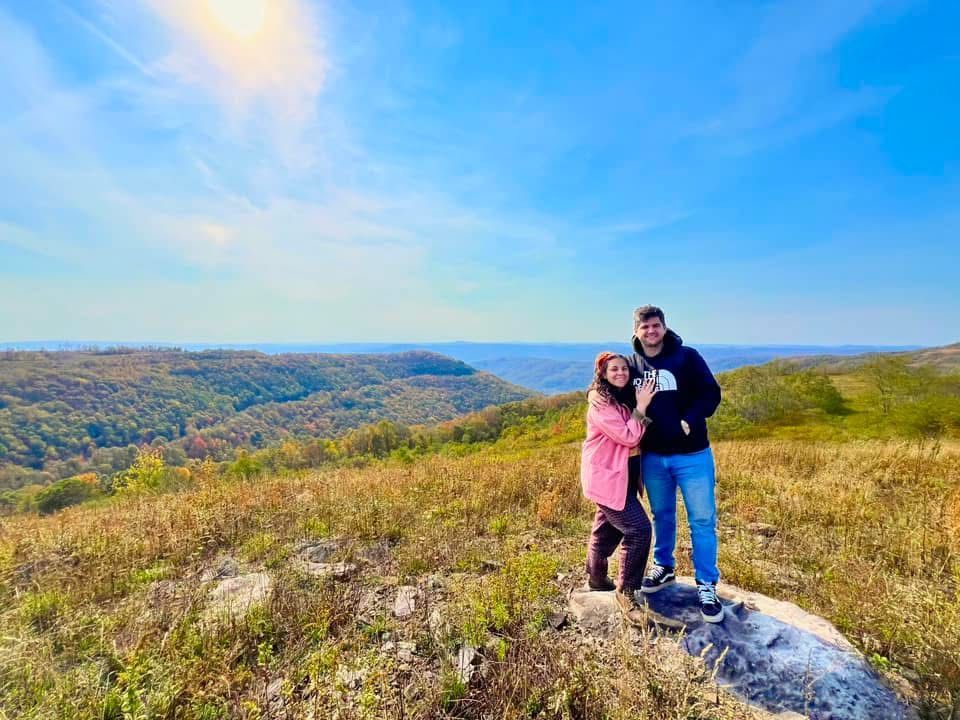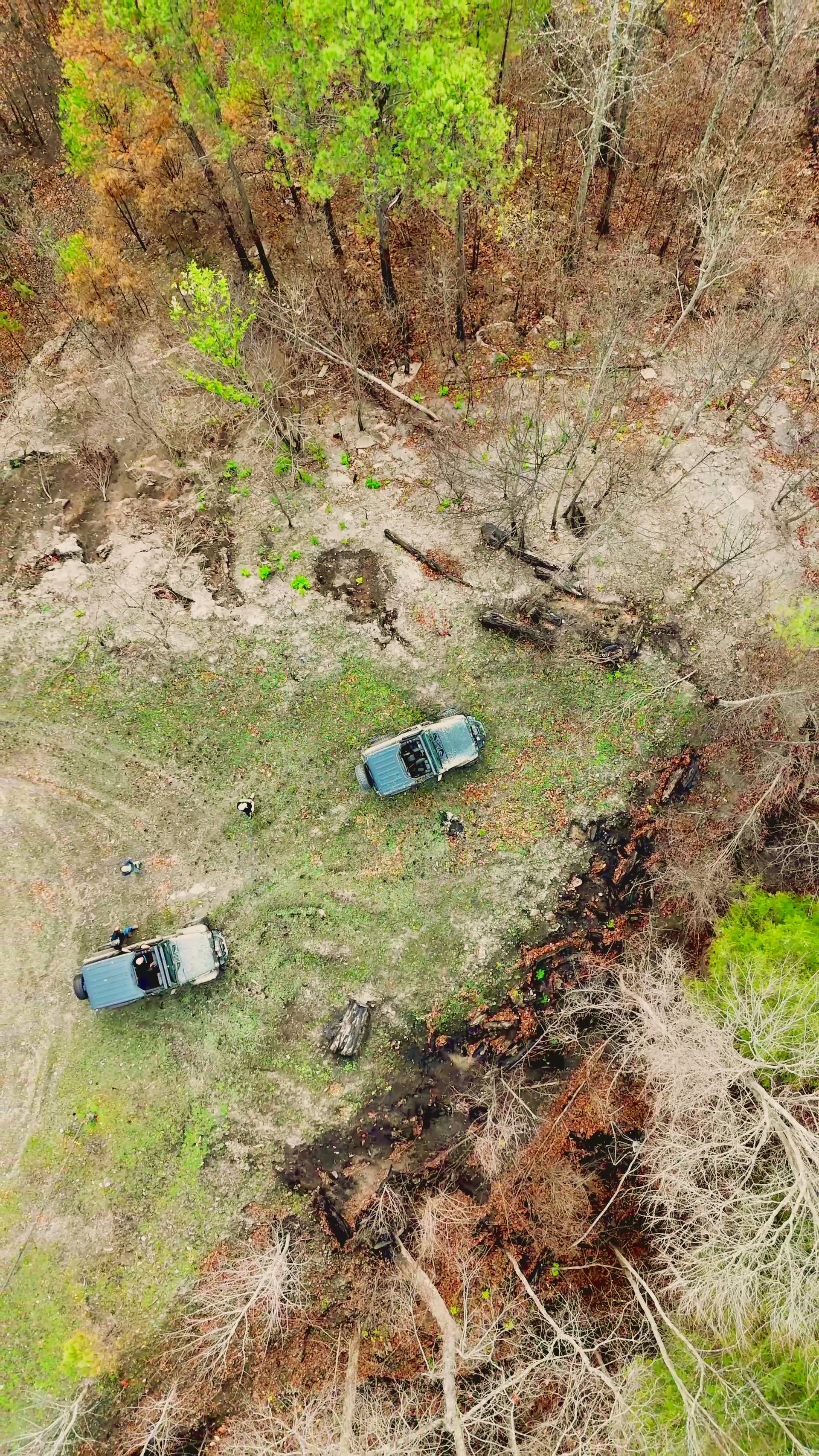Discover Thrilling New River Gorge Jeep Adventures Today!
Jeep Tours New River Gorge: Ultimate Guide to Off-Road Adventures and Guided Excursions
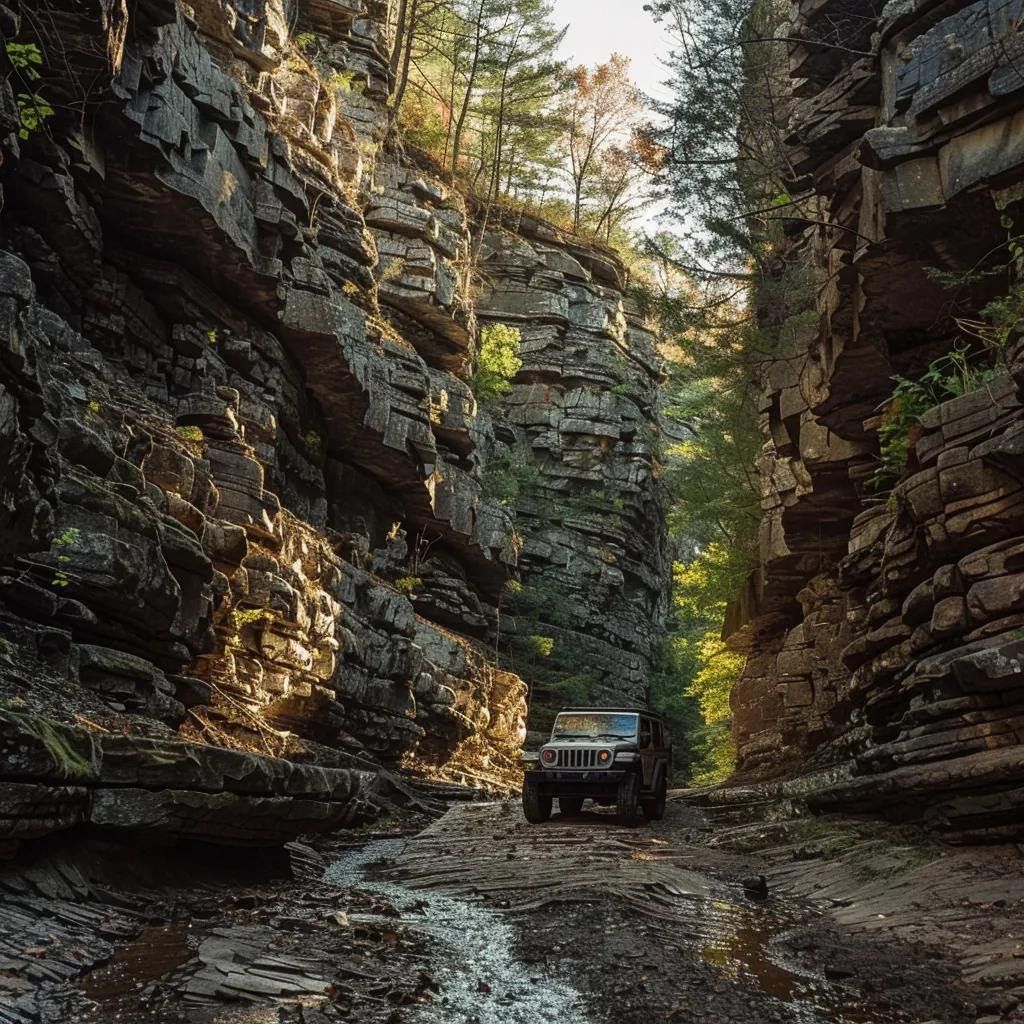
The New River Gorge stands as one of America's premier destinations for off-road adventures, offering an extraordinary combination of rugged terrain, breathtaking scenery, and rich cultural history that creates the perfect backdrop for unforgettable Jeep touring experiences. This magnificent landscape, carved by millions of years of geological forces and shaped by centuries of human history, provides adventure enthusiasts with access to some of the most diverse and exciting off-road opportunities available anywhere in the eastern United States.
Nestled in the heart of West Virginia's adventure tourism corridor, the New River Gorge region encompasses over 70,000 acres of protected wilderness, historic sites, and recreational opportunities that attract outdoor enthusiasts from around the world. The area's unique geological features, including ancient sandstone cliffs, deep river valleys, and extensive forest systems, create an ideal environment for Jeep touring that ranges from gentle scenic drives suitable for families to challenging technical trails that test the skills of experienced off-road drivers.
The appeal of Jeep tours in the New River Gorge extends far beyond simple recreational driving to encompass educational experiences that connect visitors with the region's natural and cultural heritage. Professional guided tours provide access to areas that might otherwise be difficult to find or navigate independently, while offering expert interpretation of the landscape's geological features, wildlife habitats, and historical significance that enriches the adventure experience.
Local tour operators who specialize in New River Gorge Jeep adventures bring decades of combined experience and intimate knowledge of the region's trails, conditions, and hidden gems that transform ordinary off-road excursions into extraordinary adventures. These professionals understand how to match tour experiences with participant skill levels and interests while ensuring safety and environmental responsibility throughout every adventure.
The diversity of Jeep touring options available in the New River Gorge ensures that every visitor can find experiences that match their adventure preferences, physical capabilities, and time constraints. From half-day scenic tours that showcase the region's most spectacular viewpoints to multi-day expeditions that explore remote wilderness areas, the range of available experiences accommodates everyone from first-time off-road enthusiasts to seasoned adventure travelers seeking new challenges.
Weather patterns and seasonal changes in the New River Gorge create year-round opportunities for Jeep touring, with each season offering unique advantages and distinctive experiences. Spring brings wildflower blooms and moderate temperatures ideal for extended outdoor adventures, while summer provides long daylight hours perfect for comprehensive exploration. Fall transforms the landscape into a spectacular display of autumn colors that creates some of the most photographed scenery in the eastern United States, and winter offers crisp, clear conditions that provide exceptional visibility and unique seasonal beauty.
The economic and cultural impact of adventure tourism in the New River Gorge has created a thriving community of outdoor recreation businesses, local guides, and support services that enhance the overall visitor experience while contributing to the region's economic vitality. This infrastructure ensures that visitors have access to high-quality equipment, professional guidance, and comprehensive support services that make Jeep touring accessible and enjoyable for participants of all experience levels.
Environmental stewardship and responsible recreation practices form the foundation of sustainable Jeep touring in the New River Gorge, with tour operators and visitors working together to preserve the natural beauty and ecological integrity that make this region so special. Understanding and following Leave No Trace principles, respecting wildlife habitats, and supporting conservation efforts ensure that future generations will continue to enjoy the same spectacular off-road opportunities that attract visitors today.
What Are the Best Jeep Tours Available in New River Gorge?
The New River Gorge region offers an exceptional variety of Jeep tour experiences that cater to diverse interests, skill levels, and adventure preferences, making it one of the most comprehensive off-road destinations in the eastern United States. Understanding the range of available tour options helps visitors select experiences that align with their specific goals while ensuring optimal enjoyment and satisfaction from their New River Gorge adventure.
Scenic Overview Tours represent the most popular introduction to New River Gorge Jeep touring, providing comprehensive orientation to the region's most spectacular viewpoints, geological features, and cultural landmarks. These tours typically span three to four hours and cover carefully selected routes that showcase the area's diverse landscapes while remaining accessible to participants with varying levels of off-road experience. Scenic tours often include stops at iconic locations like the New River Gorge Bridge, Grandview overlook, and various historical sites that provide context for understanding the region's natural and cultural heritage.
Professional guides leading scenic tours possess extensive knowledge of local geology, ecology, and history that transforms simple sightseeing into educational experiences that deepen appreciation for the New River Gorge's unique characteristics. These tours typically include interpretation of the region's coal mining heritage, explanation of geological processes that created the dramatic landscape, and identification of native plant and animal species that inhabit different ecological zones throughout the area.
Adventure and Technical Tours cater to experienced off-road enthusiasts seeking challenging terrain and technical driving experiences that test vehicle capabilities and driver skills. These tours typically explore more remote and demanding trails that require advanced four-wheel-drive techniques, careful navigation, and appropriate safety equipment. Technical tours often include instruction in advanced off-road driving techniques, vehicle recovery methods, and trail navigation skills that enhance participants' overall off-road capabilities.
The technical tour experience emphasizes skill development and adventure challenge while maintaining appropriate safety standards and environmental responsibility. Professional guides provide instruction and support that helps participants safely navigate challenging terrain while building confidence and competence in advanced off-road driving techniques. These tours often include opportunities to practice specific skills like rock crawling, steep ascent and descent techniques, and obstacle navigation in controlled environments.
Historical and Cultural Tours focus on the rich human history of the New River Gorge region, combining off-road adventure with exploration of historical sites, abandoned mining operations, and cultural landmarks that tell the story of human interaction with this remarkable landscape. These tours typically include visits to preserved mining sites, historical communities, and cultural centers that provide insight into the lives and experiences of the people who shaped the region's development.
Cultural tours often incorporate storytelling elements that bring historical events and personalities to life while connecting past experiences with contemporary conservation and recreation efforts. Professional guides with backgrounds in local history provide detailed interpretation of historical sites while explaining how past activities continue to influence current land use patterns and recreational opportunities.
Wildlife and Nature Tours emphasize the New River Gorge's exceptional biodiversity and ecological significance, providing opportunities to observe native wildlife species while learning about habitat conservation and ecosystem management. These tours typically focus on areas known for wildlife activity and include instruction in wildlife observation techniques, habitat identification, and conservation principles that support healthy ecosystems.
Nature-focused tours often coordinate timing with seasonal wildlife activity patterns to maximize observation opportunities while minimizing disturbance to sensitive species and habitats. Professional naturalist guides provide expert interpretation of ecological relationships and conservation challenges while helping participants develop greater appreciation for the complex natural systems that support the region's remarkable biodiversity.
Photography and Sunrise/Sunset Tours cater to visitors seeking optimal conditions for capturing the New River Gorge's spectacular scenery through photography and videography. These specialized tours coordinate timing and locations to take advantage of optimal lighting conditions while providing access to viewpoints that offer exceptional photographic opportunities. Photography tours often include instruction in landscape photography techniques and guidance about optimal camera settings for different lighting conditions.
Sunrise and sunset tours provide access to elevated viewpoints during the golden hours when dramatic lighting transforms the landscape into spectacular displays of color and contrast. These tours typically begin before dawn or extend into evening hours to capture the full range of lighting conditions that create the most memorable and dramatic photographic opportunities.
Customized and Private Tours offer personalized experiences tailored to specific group interests, skill levels, and time constraints. Private tours provide flexibility to adjust routes, timing, and focus areas based on participant preferences while ensuring optimal group dynamics and individual attention from professional guides. Customized tours can combine elements from different tour types to create unique experiences that address specific interests or celebration occasions.
Private tour options often include enhanced amenities like gourmet meals, premium equipment, and extended access to exclusive locations that provide exceptional value for special occasions or groups seeking premium adventure experiences. The personalized nature of private tours allows for detailed customization that ensures optimal satisfaction and memorable experiences for all participants.
Multi-Day Adventure Packages combine Jeep touring with other outdoor activities and accommodations to create comprehensive adventure experiences that showcase multiple aspects of New River Gorge recreation opportunities. These packages often include camping, hiking, rock climbing, or whitewater rafting components that provide diverse adventure experiences while maintaining focus on off-road exploration and discovery.
Extended adventure packages allow for deeper exploration of remote areas and provide opportunities to experience the New River Gorge's changing moods and conditions throughout different times of day and weather patterns. Multi-day experiences often include educational components, skill development opportunities, and cultural immersion activities that create lasting memories and deeper connections with the region's natural and cultural heritage.
Which Jeep Tour Options Suit Different Skill Levels?
Matching Jeep tour experiences with appropriate skill levels ensures optimal safety, enjoyment, and learning opportunities for all participants while preventing frustration or dangerous situations that can result from mismatched expectations and capabilities. The New River Gorge's diverse terrain and trail options provide excellent opportunities for progressive skill development, allowing participants to advance gradually from basic tours to more challenging adventures as their experience and confidence grow.
Beginner-Friendly Tours are specifically designed for participants with little or no off-road driving experience, focusing on gentle terrain, comprehensive instruction, and confidence-building activities that provide positive introduction to Jeep touring. These tours typically utilize well-maintained trails with minimal technical challenges while providing extensive guidance and support from professional instructors who specialize in working with novice off-road drivers.
Beginner tours emphasize fundamental off-road driving concepts including proper vehicle positioning, throttle control, steering techniques, and basic four-wheel-drive system operation. Professional instructors provide patient, encouraging guidance that helps new drivers develop essential skills while building confidence in their abilities to handle off-road conditions safely and effectively.
Safety instruction forms a critical component of beginner tours, with comprehensive orientation covering proper seatbelt use, communication protocols, emergency procedures, and environmental awareness that ensures safe participation throughout the adventure. Instructors emphasize the importance of following guidance, maintaining appropriate speeds, and communicating concerns or questions promptly to ensure optimal safety and learning outcomes.
Vehicle familiarization activities help beginners understand Jeep capabilities and limitations while learning to operate four-wheel-drive systems, differential locks, and other specialized equipment that enhances off-road performance. Hands-on instruction in vehicle operation ensures that participants understand how to use available technology effectively while maintaining appropriate respect for vehicle capabilities and environmental conditions.
Intermediate Tours cater to participants with some off-road experience who are ready to tackle more challenging terrain while continuing to develop their skills and confidence. These tours typically include moderate technical challenges like rocky sections, steep grades, and water crossings that require more advanced driving techniques while remaining within the capabilities of reasonably experienced drivers.
Intermediate tours often include instruction in advanced techniques like line selection, momentum management, and obstacle navigation that help participants handle increasingly challenging terrain safely and effectively. Professional guides provide coaching and feedback that helps intermediate drivers refine their techniques while building skills needed for more advanced off-road adventures.
Progressive challenge structure in intermediate tours allows participants to practice new skills in controlled environments before applying them to more demanding situations. This graduated approach helps build confidence while ensuring that participants develop solid fundamental skills before attempting more advanced techniques or challenging terrain.
Group dynamics in intermediate tours often benefit from the mix of experience levels, with more experienced participants providing encouragement and informal mentoring to those still developing their skills. Professional guides facilitate positive group interactions while ensuring that all participants receive appropriate attention and support regardless of their individual skill levels.
Advanced Tours challenge experienced off-road drivers with technical terrain that requires sophisticated driving skills, advanced vehicle knowledge, and excellent judgment to navigate safely. These tours typically explore the most challenging trails available in the New River Gorge region while providing opportunities for skill refinement and advanced technique development.
Technical instruction in advanced tours focuses on specialized techniques like rock crawling, steep descent control, and recovery operations that require precise vehicle control and thorough understanding of off-road driving principles. Professional guides with extensive technical expertise provide detailed instruction and coaching that helps advanced drivers continue developing their capabilities.
Risk management becomes increasingly important in advanced tours, with emphasis on proper preparation, equipment inspection, and conservative decision-making that ensures safety even in challenging conditions. Advanced tours often include instruction in self-recovery techniques, group communication protocols, and emergency response procedures that enhance safety and self-reliance.
Equipment requirements for advanced tours typically include specialized safety gear, recovery equipment, and vehicle modifications that support safe navigation of technical terrain. Professional tour operators provide guidance about appropriate equipment while ensuring that all participants have access to necessary safety gear and recovery tools.
Family-Friendly Tours accommodate participants of all ages while providing engaging experiences that appeal to diverse interests and attention spans. These tours typically emphasize scenic beauty, wildlife observation, and educational content while maintaining gentle terrain and comfortable conditions suitable for children and older adults.
Educational components in family tours often include interactive activities, storytelling, and hands-on learning opportunities that engage younger participants while providing valuable information about the New River Gorge's natural and cultural heritage. Professional guides skilled in working with families provide age-appropriate interpretation and activities that maintain interest and engagement throughout the tour.
Safety considerations for family tours include additional precautions for younger participants, modified communication protocols, and enhanced comfort amenities that ensure positive experiences for all family members. Tour operators often provide specialized equipment like child safety seats and comfort accessories that enhance safety and enjoyment for family groups.
Adaptive Tours accommodate participants with physical limitations or special needs through modified vehicles, specialized equipment, and customized tour approaches that ensure accessibility and enjoyment for all participants. These tours demonstrate the inclusive nature of New River Gorge adventure tourism while providing meaningful outdoor experiences for participants who might otherwise face barriers to participation.
Professional guides trained in adaptive recreation techniques provide specialized support and accommodation that ensures safe, enjoyable participation for individuals with diverse abilities and needs. Adaptive tours often include modified vehicles, specialized seating, and enhanced safety equipment that supports participation while maintaining the adventure and excitement that make Jeep touring so appealing.
Corporate and Team-Building Tours combine adventure experiences with professional development activities that strengthen team relationships while providing unique outdoor experiences. These tours often include problem-solving challenges, communication exercises, and leadership development activities that utilize the off-road environment to create memorable team-building experiences.
Professional facilitators with expertise in both off-road instruction and team development provide structured activities that achieve specific corporate objectives while ensuring engaging, enjoyable experiences for all participants. Corporate tours can be customized to address specific team goals while providing the adventure and excitement that create lasting positive memories and stronger working relationships.
How Do Sunset and Scenic Jeep Tours Enhance Your Experience?
Sunset and scenic Jeep tours represent some of the most memorable and photographically rewarding experiences available in the New River Gorge, combining the adventure of off-road exploration with the natural spectacle of dramatic lighting conditions that transform familiar landscapes into extraordinary displays of color, contrast, and beauty. These specialized tours capitalize on optimal timing and strategic positioning to provide access to viewpoints and experiences that showcase the region's scenic beauty at its absolute peak.
Optimal Lighting Conditions during sunset hours create photographic and visual opportunities that simply cannot be replicated during other times of day. The warm, golden light that characterizes the hour before sunset, often called the "golden hour" by photographers, provides ideal conditions for capturing the New River Gorge's dramatic topography with enhanced color saturation, reduced harsh shadows, and spectacular atmospheric effects that create truly memorable images and experiences.
Professional tour guides understand how lighting conditions change throughout the evening and position tours to take advantage of optimal viewing opportunities at different locations as the sun progresses toward the horizon. This strategic timing ensures that participants experience the full range of lighting effects while visiting multiple viewpoints that showcase different aspects of the landscape under ideal conditions.
The interplay between natural lighting and the New River Gorge's distinctive geological features creates visual effects that change continuously throughout sunset tours, providing dynamic experiences that evolve and develop as lighting conditions shift. Rocky outcroppings, deep valleys, and forested ridges each respond differently to changing light, creating a constantly evolving display that maintains visual interest and excitement throughout the tour.
Enhanced Scenic Beauty results from the combination of dramatic lighting with the New River Gorge's already spectacular natural features, creating visual experiences that often exceed participants' expectations and provide lasting memories of their visit. The region's diverse topography, including deep river valleys, towering sandstone cliffs, and extensive forest canopies, provides ideal subjects for sunset photography and scenic appreciation.
Elevated viewpoints accessible through Jeep touring provide perspectives on the landscape that reveal the full scope and grandeur of the New River Gorge's geological features while offering unobstructed views of sunset displays. These vantage points often include locations that are inaccessible to conventional vehicles, making Jeep tours essential for reaching the most spectacular viewing opportunities.
Seasonal variations in sunset timing and atmospheric conditions create different experiences throughout the year, with each season offering unique advantages for scenic tours. Spring and fall often provide the clearest atmospheric conditions and most dramatic color displays, while summer offers extended daylight hours that allow for more comprehensive exploration before sunset viewing.
Wildlife Activity Patterns during evening hours often provide enhanced opportunities for wildlife observation, as many species become more active during the cooler temperatures and reduced human activity that characterize late afternoon and early evening periods. Sunset tours often coincide with peak activity periods for deer, wild turkey, and various bird species that inhabit the New River Gorge region.
Professional naturalist guides understand wildlife behavior patterns and can position tours to maximize observation opportunities while maintaining appropriate distances and minimizing disturbance to sensitive species. Evening tours often provide opportunities to observe wildlife behaviors that are less commonly seen during daytime hours, including feeding activities, social interactions, and territorial displays.
The reduced noise and activity levels that characterize evening tours create more favorable conditions for wildlife observation, as animals are less likely to be disturbed by human presence and more likely to engage in natural behaviors that provide interesting and educational viewing opportunities.
Atmospheric and Weather Effects during sunset hours often create spectacular displays that enhance the visual drama of New River Gorge landscapes. Fog, mist, and cloud formations that develop during evening hours can create ethereal effects that transform familiar viewpoints into mystical, otherworldly scenes that provide exceptional photographic opportunities.
Temperature inversions that occur during evening hours sometimes create fog layers that fill valleys while leaving elevated viewpoints clear, creating dramatic contrasts between misty valleys and clear ridgetops that provide spectacular visual effects. These atmospheric conditions are unpredictable but create some of the most memorable and photographically rewarding experiences available in the region.
Seasonal weather patterns influence atmospheric effects, with fall and winter often providing the most dramatic fog and mist displays, while spring and summer may offer spectacular thunderstorm formations that create dramatic skies and lighting effects during evening hours.
Photography and Documentation Opportunities during sunset tours provide ideal conditions for capturing professional-quality images that document the New River Gorge's scenic beauty while creating lasting memories of the tour experience. The combination of optimal lighting, spectacular scenery, and strategic positioning creates conditions that allow even amateur photographers to capture exceptional images.
Professional tour guides often provide photography instruction and assistance that helps participants make the most of available opportunities while learning techniques that improve their overall photography skills. This educational component adds value to the tour experience while helping participants document their adventure more effectively.
Equipment recommendations and photography tips provided during sunset tours help participants prepare for optimal image capture while understanding how to work with changing lighting conditions and challenging outdoor environments. Professional guides often carry backup equipment and provide technical assistance that ensures all participants can document their experience regardless of their photography equipment or experience level.
Romantic and Special Occasion Experiences make sunset Jeep tours popular choices for anniversaries, proposals, and other special celebrations that benefit from spectacular natural settings and intimate group sizes. The combination of adventure, natural beauty, and romantic lighting creates ideal conditions for memorable special occasions that participants will treasure for years to come.
Private sunset tours can be customized to include special amenities like champagne service, gourmet snacks, or personalized touches that enhance the romantic atmosphere while providing unique celebration experiences. Professional tour operators understand how to create memorable special occasion experiences while maintaining focus on safety and environmental responsibility.
Cultural and Historical Context provided during sunset tours often includes storytelling and interpretation that connects the visual experience with the human history and cultural significance of the New River Gorge region. Professional guides skilled in local history can provide context that enhances appreciation for the landscape while explaining how past human activities continue to influence current conditions and recreational opportunities.
The peaceful, contemplative atmosphere that characterizes sunset tours provides ideal conditions for storytelling and cultural interpretation that might be more difficult to appreciate during more active daytime adventures. This educational component adds depth and meaning to the visual experience while helping participants develop greater appreciation for the region's complex natural and cultural heritage.
What Historical Sites Can You Visit on Jeep Excursions?
The New River Gorge region contains a remarkable concentration of historical sites that tell the story of human interaction with this dramatic landscape spanning thousands of years, from ancient Native American settlements to the industrial heritage of coal mining operations that shaped the region's development throughout the 19th and 20th centuries. Jeep excursions provide unique access to many of these historical sites, including locations that are difficult or impossible to reach through conventional transportation methods.
Coal Mining Heritage Sites represent the most extensive and significant historical resources in the New River Gorge region, reflecting the area's role as one of America's most important coal-producing regions during the industrial expansion of the late 1800s and early 1900s. These sites include preserved mining operations, company towns, transportation infrastructure, and industrial facilities that provide comprehensive insight into the lives and experiences of the thousands of workers and families who built their lives around coal extraction.
The Kaymoor Mine complex represents one of the most accessible and well-preserved examples of New River Gorge coal mining operations, featuring extensive surface and underground facilities that demonstrate the scale and complexity of industrial coal extraction. Jeep tours can access viewing areas and interpretive sites that explain mining processes, worker experiences, and environmental impacts while providing spectacular views of the preserved industrial infrastructure.
Thurmond, once a bustling railroad town that served as a major coal shipping center, now stands as a preserved historical community that demonstrates the boom-and-bust cycles that characterized coal mining regions. Jeep excursions can explore the preserved buildings, railroad infrastructure, and community facilities while learning about the social and economic forces that shaped life in coal mining communities.
The Nuttallburg mining complex provides another exceptional example of preserved coal mining operations, featuring extensive surface facilities, transportation infrastructure, and worker housing that illustrate the comprehensive nature of coal mining operations and their impact on local communities and landscapes.
Railroad and Transportation History sites throughout the New River Gorge region reflect the critical role of transportation infrastructure in supporting coal mining operations and regional economic development. The Chesapeake and Ohio Railway system that served the region included some of the most challenging and innovative railroad engineering projects in American history, with bridges, tunnels, and track systems that overcame the region's difficult topography.
The New River Gorge Bridge, while primarily a modern transportation facility, represents the culmination of centuries of transportation innovation in the region and provides spectacular views and interpretation opportunities that connect past and present transportation challenges and solutions. Jeep tours can access viewpoints that provide optimal perspectives on the bridge while explaining its engineering significance and relationship to historical transportation systems.
Abandoned railroad grades and infrastructure throughout the region provide opportunities to explore historical transportation routes while understanding how railroad development influenced settlement patterns, economic development, and environmental change throughout the New River Gorge region.
Native American Heritage Sites reflect thousands of years of human habitation and cultural development in the New River Gorge region, with archaeological evidence indicating continuous occupation by various Native American groups who utilized the region's abundant natural resources and strategic location along major river systems.
Rock shelters and archaeological sites throughout the region provide evidence of prehistoric occupation and cultural practices, with some sites containing petroglyphs, tool-making areas, and other cultural artifacts that demonstrate the sophisticated understanding of local environments developed by indigenous peoples over millennia.
Professional guides with training in archaeological interpretation can provide appropriate context for understanding Native American heritage while ensuring that sensitive sites receive proper respect and protection. These interpretive experiences help visitors appreciate the deep cultural history of the region while understanding contemporary Native American connections to the landscape.
Civil War and Military History sites reflect the New River Gorge region's strategic importance during the Civil War, when control of transportation routes and natural resources made the area a focus of military operations and civilian conflict. Several significant battles and military operations occurred in the region, with preserved sites and interpretive opportunities that explain the war's impact on local communities and landscapes.
The Battle of Droop Mountain, while located outside the immediate New River Gorge area, represents the largest Civil War engagement in West Virginia and demonstrates the strategic importance of the region's transportation routes and natural resources. Jeep tours can access related sites and provide context for understanding how Civil War operations affected the broader region.
Military installations and defensive positions throughout the region provide opportunities to explore Civil War fortifications while understanding how military engineers utilized natural terrain features to create strategic advantages during combat operations.
Industrial and Community Heritage sites beyond coal mining include various manufacturing operations, agricultural settlements, and community facilities that supported regional development and provided economic opportunities for diverse populations throughout the region's history.
Preserved homesteads and agricultural sites demonstrate how families adapted to the region's challenging topography while developing sustainable farming and livestock operations that supported local communities. These sites often include examples of traditional building techniques, agricultural practices, and community organization that reflect the resourcefulness and adaptability of early settlers.
Industrial sites including lumber mills, iron furnaces, and manufacturing facilities demonstrate the diversity of economic activities that supported regional development while providing insight into how natural resources were utilized to support various industries throughout different historical periods.
Cultural and Social History sites include churches, schools, community centers, and other facilities that supported the social and cultural life of New River Gorge communities throughout different historical periods. These sites provide insight into how communities organized themselves while maintaining cultural traditions and adapting to changing economic and social conditions.
Preserved cemeteries throughout the region provide opportunities to explore genealogical history while understanding how different cultural groups contributed to regional development and community formation. These sites often include examples of traditional burial practices, memorial art, and community organization that reflect the diverse cultural heritage of the region.
Preservation and Interpretation Efforts throughout the New River Gorge region involve collaboration between federal agencies, state organizations, local communities, and private groups working to preserve historical sites while providing appropriate interpretation and access for visitors. These efforts ensure that historical resources remain available for education and appreciation while protecting sensitive sites from damage or inappropriate use.
Professional interpretation provided during Jeep excursions includes accurate historical information based on current research and archaeological evidence while respecting the cultural significance of sites for descendant communities and contemporary stakeholders. This approach ensures that historical tours provide educational value while maintaining appropriate respect for the people and events that shaped the region's development.
How to Choose the Best Jeep Trails in New River Gorge for Off-Road Adventures?
Selecting appropriate Jeep trails in the New River Gorge requires careful consideration of multiple factors including skill level, vehicle capabilities, group composition, weather conditions, and adventure objectives to ensure safe, enjoyable experiences that match expectations with available opportunities. The region's diverse trail system offers options ranging from gentle scenic routes suitable for stock vehicles to challenging technical trails that require specialized equipment and advanced driving skills.
Trail Difficulty Assessment forms the foundation of appropriate trail selection, with standardized rating systems that help drivers understand the technical challenges and skill requirements associated with different routes. The New River Gorge region utilizes rating systems that consider factors like obstacle size, trail width, surface conditions, exposure levels, and technical complexity to provide accurate difficulty assessments that guide appropriate trail selection.
Beginner trails typically feature wide, well-maintained surfaces with minimal obstacles and gentle grades that allow novice drivers to develop basic off-road skills while enjoying scenic beauty and wildlife observation opportunities. These trails often include multiple exit points and turnaround opportunities that provide flexibility for groups with varying comfort levels or time constraints.
Intermediate trails introduce moderate technical challenges including rocky sections, steeper grades, and narrow passages that require more advanced driving techniques while remaining within the capabilities of reasonably experienced drivers operating properly equipped vehicles. These trails often provide opportunities to practice specific skills while building confidence for more challenging adventures.
Advanced trails present significant technical challenges that require sophisticated driving skills, specialized equipment, and excellent judgment to navigate safely. These trails may include large obstacles, extreme grades, narrow ledges, and complex route-finding challenges that test both driver capabilities and vehicle performance under demanding conditions.
Vehicle Capability Matching ensures that trail selection aligns with the capabilities and limitations of available vehicles while considering factors like ground clearance, approach and departure angles, traction systems, and protective equipment that affect performance on different types of terrain. Understanding vehicle specifications and limitations helps prevent damage while ensuring optimal performance and safety.
Stock vehicles with basic four-wheel-drive systems can handle many New River Gorge trails while providing excellent introduction to off-road driving and scenic exploration. These vehicles typically perform well on maintained trails with moderate challenges while offering reliability and comfort for extended adventures.
Modified vehicles with enhanced suspension systems, larger tires, and protective equipment can handle more challenging trails while providing improved performance and capability for technical terrain. Understanding how modifications affect vehicle performance helps drivers select trails that take advantage of enhanced capabilities while avoiding situations that exceed vehicle limits.
Specialized off-road vehicles with extensive modifications, competition-grade equipment, and advanced traction systems can handle the most challenging trails available in the region while providing exceptional performance and capability for extreme off-road adventures. These vehicles require experienced drivers who understand how to utilize advanced equipment safely and effectively.
Group Composition Considerations influence trail selection by considering the experience levels, physical capabilities, and adventure preferences of all participants to ensure that chosen routes provide appropriate challenges and enjoyment for everyone involved. Mixed-experience groups often benefit from trails that offer multiple difficulty options or bypass routes that accommodate different skill levels.
Family groups with children typically prefer trails that emphasize scenic beauty, wildlife observation, and educational opportunities while maintaining comfortable conditions and appropriate safety margins. These groups often appreciate shorter routes with frequent stops and interactive elements that maintain interest and engagement for younger participants.
Experienced off-road groups may prefer challenging technical trails that provide opportunities for skill development, problem-solving, and advanced technique practice while offering the excitement and satisfaction that comes from successfully navigating demanding terrain.
Corporate or team-building groups often benefit from trails that provide moderate challenges while offering opportunities for collaboration, communication, and shared problem-solving that support team development objectives while providing memorable adventure experiences.
Seasonal and Weather Considerations significantly impact trail conditions and appropriate route selection, with different seasons offering unique advantages and challenges that affect safety, accessibility, and enjoyment. Understanding seasonal patterns helps drivers select trails that provide optimal experiences while avoiding conditions that might create safety concerns or disappointing experiences.
Spring conditions often feature moderate temperatures and excellent visibility while potentially including muddy conditions from snowmelt and spring rains that can make some trails more challenging or temporarily inaccessible. Spring also provides excellent wildlife observation opportunities as animals become more active after winter dormancy.
Summer conditions typically offer the most stable trail conditions and longest daylight hours while potentially including hot temperatures that require additional hydration and sun protection considerations. Summer also provides access to high-elevation trails that may be inaccessible during other seasons due to snow or ice conditions.
Fall conditions often provide the most spectacular scenic beauty with autumn foliage displays while offering comfortable temperatures and excellent atmospheric conditions for photography and scenic appreciation. Fall weather can be variable, requiring flexibility and preparation for changing conditions.
Winter conditions can provide unique beauty and excellent visibility while requiring specialized equipment and techniques for safe navigation of potentially icy or snow-covered trails. Winter adventures often require modified expectations and enhanced safety preparations while offering distinctive experiences not available during other seasons.
Environmental and Conservation Considerations guide responsible trail selection that minimizes environmental impact while supporting conservation efforts and sustainable recreation practices. Understanding environmental sensitivities helps drivers select trails and timing that protect sensitive habitats while ensuring that off-road recreation remains compatible with conservation objectives.
Sensitive wildlife areas may have seasonal restrictions or recommended avoidance periods that protect breeding, nesting, or feeding activities while ensuring that recreation activities don't interfere with critical wildlife behaviors. Understanding these restrictions helps drivers plan adventures that support wildlife conservation while providing excellent recreation opportunities.
Erosion-prone areas may require special consideration during wet conditions or specific seasons when trail use might contribute to environmental damage. Responsible trail selection considers current conditions and environmental impacts while choosing routes that provide excellent adventures without compromising environmental integrity.
Safety and Emergency Preparedness considerations influence trail selection by evaluating factors like remoteness, communication coverage, evacuation accessibility, and available support resources that affect safety margins and emergency response capabilities. Understanding these factors helps drivers select trails that provide appropriate adventure challenges while maintaining reasonable safety margins.
Remote trails may offer exceptional wilderness experiences while requiring enhanced self-reliance, emergency preparedness, and communication planning that ensures appropriate safety margins for the selected adventure level. These trails often require specialized equipment and advanced planning to ensure safe completion.
Accessible trails with good communication coverage and nearby support resources provide excellent opportunities for skill development and adventure experiences while maintaining enhanced safety margins that support learning and confidence building for developing off-road drivers.
What Are the Top Rated Off-Road Trails in New River Gorge?
The New River Gorge region features an extensive network of off-road trails that have earned recognition from the off-road community for their exceptional scenic beauty, diverse technical challenges, and outstanding recreational opportunities. These top-rated trails represent the best of what the region has to offer, providing experiences that range from gentle scenic drives to challenging technical adventures that test the limits of both vehicles and drivers.
Endless Wall Trail Access Roads provide some of the most scenic and accessible off-road experiences in the New River Gorge, combining moderate technical challenges with spectacular viewpoints that showcase the region's dramatic geological features. These trails offer excellent introduction to New River Gorge off-roading while providing access to some of the area's most photographed and celebrated scenic overlooks.
The trail system includes multiple route options that accommodate different skill levels and vehicle capabilities while providing access to various viewpoints and recreational opportunities. Beginner-friendly routes offer wide, well-maintained surfaces with gentle grades that allow novice drivers to enjoy spectacular scenery while developing basic off-road skills in a forgiving environment.
More challenging route options include rocky sections, steeper grades, and technical obstacles that provide opportunities for skill development while maintaining access to the same spectacular viewpoints that make this trail system so popular. The variety of available routes ensures that groups with mixed experience levels can enjoy adventures together while accommodating different comfort levels and capabilities.
Kaymoor Trail Complex offers exceptional combination of historical significance and off-road adventure, providing access to preserved coal mining sites while navigating challenging terrain that tests vehicle capabilities and driver skills. This trail system demonstrates the region's industrial heritage while providing excellent technical off-road experiences that appeal to history enthusiasts and adventure seekers alike.
The trail includes multiple difficulty levels that range from moderate scenic routes suitable for stock vehicles to challenging technical sections that require advanced driving skills and specialized equipment. This variety ensures that the trail system can accommodate different experience levels while providing opportunities for progressive skill development.
Historical interpretation opportunities throughout the trail system add educational value to the adventure experience while helping visitors understand the human history that shaped the New River Gorge landscape. Professional guides can provide detailed historical context while ensuring that visitors appreciate both the natural beauty and cultural significance of the area.
Grandview Rim Trail provides access to some of the most spectacular viewpoints in the New River Gorge while offering moderate technical challenges that make the adventure rewarding without being overwhelming for reasonably experienced drivers. This trail system combines scenic beauty with engaging off-road driving while maintaining accessibility for a wide range of vehicle types and driver experience levels.
The trail features well-maintained surfaces with occasional rocky sections and moderate grades that provide engaging driving experiences while ensuring that the focus remains on scenic appreciation and wildlife observation. Multiple viewpoints along the route provide opportunities for photography, rest breaks, and interpretation of the landscape's geological and ecological features.
Seasonal variations in trail conditions and scenic beauty make this trail system popular throughout the year, with each season offering unique advantages for different types of adventures and photographic opportunities. Fall foliage displays are particularly spectacular from the elevated viewpoints accessible through this trail system.
Thurmond Area Trails combine historical exploration with challenging off-road adventures, providing access to preserved railroad infrastructure and coal mining sites while navigating technical terrain that requires advanced driving skills and appropriate vehicle preparation. These trails offer exceptional opportunities to explore the region's industrial heritage while enjoying demanding off-road challenges.
The trail system includes multiple route options that range from moderate historical tours suitable for stock vehicles to challenging technical adventures that require specialized equipment and advanced driving techniques. This variety ensures that the trail system can accommodate different interests and capabilities while providing comprehensive exploration opportunities.
Railroad infrastructure and mining sites accessible through these trails provide exceptional opportunities for historical interpretation and photography while demonstrating the scale and complexity of industrial operations that once dominated the New River Gorge region.
Babcock State Park Area Trails offer excellent combination of scenic beauty and moderate technical challenges while providing access to some of the region's most photographed landmarks including the historic Glade Creek Grist Mill. These trails provide excellent introduction to New River Gorge off-roading while offering opportunities for photography, wildlife observation, and historical exploration.
The trail system features well-maintained routes with moderate obstacles that provide engaging driving experiences while ensuring accessibility for a wide range of vehicle types and experience levels. Multiple scenic stops and interpretation opportunities add educational value while providing excellent photography and rest break locations.
Seasonal beauty throughout the Babcock area makes these trails popular year-round destinations, with spring wildflowers, summer greenery, fall foliage, and winter snow each providing distinctive scenic experiences that appeal to different visitor preferences and photographic interests.
Summersville Lake Area Trails provide unique opportunities to combine off-road adventures with water recreation activities while exploring terrain that offers excellent technical challenges and spectacular scenic beauty. These trails offer access to elevated viewpoints overlooking Summersville Lake while providing engaging off-road driving experiences that test vehicle capabilities and driver skills.
The trail system includes multiple difficulty levels that accommodate different experience levels while providing access to various recreational opportunities including swimming, fishing, and boating activities that can be combined with off-road adventures to create comprehensive outdoor recreation experiences.
Technical challenges throughout the trail system include rocky sections, steep grades, and narrow passages that require careful navigation and appropriate vehicle preparation while providing excellent opportunities for skill development and adventure satisfaction.
Hawks Nest Area Trails offer exceptional scenic beauty combined with moderate to challenging technical obstacles that provide engaging off-road experiences while showcasing some of the most spectacular viewpoints in the New River Gorge region. These trails provide access to elevated overlooks that offer panoramic views of the New River and surrounding landscape while navigating terrain that tests vehicle capabilities and driver skills.
The trail system features multiple route options that accommodate different skill levels while providing access to various viewpoints and recreational opportunities. Challenging technical sections provide opportunities for advanced drivers to test their skills while alternative routes ensure that less experienced drivers can still access spectacular scenic areas.
Wildlife observation opportunities throughout the Hawks Nest area add natural history interest to off-road adventures while providing excellent photography opportunities for visitors interested in documenting the region's diverse flora and fauna.
Fayetteville Area Urban Trails provide convenient access to off-road adventures while offering proximity to restaurants, accommodations, and support services that enhance the overall visitor experience. These trails offer excellent introduction to New River Gorge off-roading while providing easy access to urban amenities and services.
The trail system includes multiple difficulty levels that range from beginner-friendly scenic routes to challenging technical adventures while maintaining convenient access to the Fayetteville area's extensive tourism infrastructure and support services.
Proximity to professional guide services, equipment rental facilities, and repair services makes the Fayetteville area trails excellent choices for visitors who want to combine off-road adventures with comprehensive support services and urban amenities.
How Difficult Are the Jeep Trails for Beginners and Experts?
The New River Gorge offers a wide spectrum of Jeep trail difficulties, catering to everyone from first-time off-roaders to seasoned experts seeking extreme challenges. Understanding this difficulty range is crucial for selecting appropriate trails that ensure a safe, enjoyable, and rewarding experience. Trail rating systems, typically ranging from easy (1-2) to extreme (9-10), help drivers gauge what to expect.
Beginner Trails (Difficulty 1-3):
These trails are ideal for individuals new to off-roading or families looking for a scenic, low-stress adventure. They generally feature:
•Surface: Mostly graded dirt or gravel roads, possibly with some small, embedded rocks or minor ruts. Surfaces are generally stable.
•Obstacles: Minimal obstacles. Any rocks or logs will be small and easily navigable. Water crossings, if any, will be shallow with firm bottoms.
•Grades: Gentle slopes, typically less than 10 degrees. Four-wheel drive (4WD) might be needed occasionally for traction on loose surfaces or slight inclines, but often 2WD suffices.
•Width: Trails are usually wide enough for vehicles to pass easily, with good visibility around corners.
•Exposure: Little to no shelf roads or significant drop-offs.
•Navigation: Well-marked and easy to follow.
What Beginners Can Expect: Beginners can expect a comfortable ride focused on enjoying the scenery, learning basic vehicle control on uneven surfaces, and understanding how 4WD engages. These trails build confidence without overwhelming new drivers. Examples might include well-maintained forest service roads leading to overlooks or historical sites.
Vehicle Requirements for Beginners: Stock SUVs or trucks with 4WD (or even robust AWD systems for the easiest trails) are typically sufficient. Good all-terrain tires are beneficial but not always essential. No special modifications are usually required.
Intermediate Trails (Difficulty 4-6):
Intermediate trails are suited for drivers who have some off-road experience and are comfortable with moderate challenges. These trails often include:
•Surface: Uneven terrain with loose rocks, larger embedded rocks, mud holes (seasonal), and more significant ruts. Trail surfaces may be off-camber.
•Obstacles: Moderate obstacles requiring careful tire placement and throttle control. This could include rocks up to 12-15 inches, logs, and deeper water crossings (check depth before entering).
•Grades: Steeper inclines and declines, potentially up to 20 degrees, where 4WD low range is necessary. Hill descent control can be useful.
•Width: Trails may narrow in sections, requiring careful maneuvering. Brush or branches might be close to the vehicle.
•Exposure: Some shelf roads with moderate drop-offs may be present, requiring driver focus.
•Navigation: Trails are generally marked but may require more attention to maps or GPS.
What Intermediate Drivers Can Expect: Intermediate drivers will need to actively use their 4WD systems, potentially engage lockers if available, and make conscious decisions about line choice. These trails offer a good balance of challenge and scenic reward, allowing drivers to hone their skills. Many of the popular named trails in the New River Gorge fall into this category, offering access to historical sites and impressive vistas.
Vehicle Requirements for Intermediate Trails: A capable 4WD vehicle (Jeep, truck, or SUV) is essential. Good all-terrain or mud-terrain tires with robust sidewalls are highly recommended. Increased ground clearance (e.g., a mild lift) and underbody protection (skid plates) are beneficial. Basic recovery gear (tow strap, shackles) should be carried.
Expert Trails (Difficulty 7-10):
Expert-level trails are designed for highly experienced off-road drivers with significantly modified vehicles. These trails present severe challenges and carry a higher risk of vehicle damage or getting stuck.
•Surface: Extremely rough and unpredictable terrain. Expect large, loose rocks, deep mud bogs, severe ruts, and off-camber sections that tilt the vehicle significantly.
•Obstacles: Large and frequent obstacles, including rock ledges over 15-20 inches, deep V-notches, tight squeezes between trees or rocks, and challenging water crossings with potential hidden obstacles.
•Grades: Very steep ascents and descents (25 degrees or more), often with loose surfaces requiring advanced throttle and brake control. Winching may be necessary.
•Width: Trails are often very narrow, with tight turns and significant body panel exposure to damage. Spotters are usually essential.
•Exposure: Significant shelf roads with steep drop-offs are common, demanding precise vehicle control and a high level of driver confidence.
•Navigation: Trails may be poorly marked or unmarked, requiring excellent navigation skills and often prior scouting.
What Experts Can Expect: Experts will be pushed to their limits and their vehicle’s capabilities. These trails require constant focus, precise maneuvering, and often teamwork with other vehicles for spotting and recovery. Body damage is a real possibility. These are not for the faint of heart or unprepared. The most extreme trails in the New River Gorge area are often found on private off-road parks or less-maintained, remote public land routes.
Vehicle Requirements for Expert Trails: Highly modified vehicles are typically required. This includes significant suspension lifts (3+ inches), large mud-terrain tires (35 inches or larger), heavy-duty axles, locking differentials (front and rear), extensive skid plating, rock sliders, and a winch. Robust recovery gear and experience using it are mandatory. Roll cages may be recommended or required for the most extreme trails.
Important Considerations for All Skill Levels:
•Never Wheel Alone: Especially on intermediate and expert trails. Travel with at least one other capable vehicle.
•Know Your Vehicle: Understand its capabilities and limitations, including ground clearance, approach/departure angles, and how to operate all 4WD systems.
•Check Trail Conditions: Conditions can change rapidly due to weather. What was an intermediate trail might become expert-level after heavy rain. Check with local off-road groups, park services, or tour operators like Blue Jacket Off-Road for current conditions.
•Air Down Tires: Lowering tire pressure increases traction and smooths the ride on rough terrain. Carry a portable air compressor to reinflate before returning to pavement.
•Bring Recovery Gear: Even on easier trails, unexpected situations can arise. At a minimum, carry a tow strap, shackles, and a shovel.
•Respect the Environment: Stay on marked trails, pack out everything you pack in (Tread Lightly! principles), and avoid sensitive areas.
•Guided Tours: For those unsure of their skill level or unfamiliar with the area, a guided New River Gorge Jeep tour is an excellent option. Companies like Blue Jacket Off-Road can match you with appropriate trails and provide expert guidance, ensuring a safe and enjoyable adventure regardless of your experience.
By honestly assessing your skill level and vehicle, and by doing thorough research, you can find Jeep trails in the New River Gorge that provide the perfect off-road adventure.
Which Trails Offer the Best Scenic Views and Wildlife Encounters?
The New River Gorge is a sanctuary of natural beauty, and many of its Jeep trails are specifically renowned for delivering breathtaking scenic vistas and opportunities for memorable wildlife encounters. Choosing trails that prioritize these aspects can transform an off-road drive into an immersive natural experience.
Trails Known for Exceptional Scenic Views:
1.Endless Wall Trail Access Roads & Overlooks:
•Views: These trails provide access to some of the most iconic overlooks in the entire National Park, including Diamond Point. Expect sweeping panoramic views of the New River winding through the deep gorge, framed by dramatic sandstone cliffs. The sheer scale of the gorge is awe-inspiring from these vantage points.
•Best Times: Sunrise and sunset offer spectacular lighting. Fall foliage season (typically October) is exceptionally popular for the vibrant colors.
2.Grandview Rim Trail:
•Views: True to its name, Grandview offers magnificent, far-reaching views of the New River, particularly the dramatic bend at the confluence with the Bluestone River. The main overlook is easily accessible, but Jeep trails in the area can lead to more secluded spots with equally stunning perspectives.
•Best Times: Clear days offer the best long-distance views. Spring wildflowers and fall colors enhance the scenery.
3.Beauty Mountain Road (FR 239):
•Views: This forest service road climbs to elevations offering stunning views eastward over the gorge and surrounding mountains. It’s known for its less crowded overlooks compared to some of the main park areas.
•Best Times: Afternoon light can be beautiful here. It’s also a great spot for stargazing on clear nights due to lower light pollution.
4.Hawks Nest State Park Area Trails:
•Views: While the main Hawks Nest overlook is paved, nearby off-road trails can provide unique perspectives of the gorge, the New River, and the historic C&O railroad tracks below. The rugged terrain itself adds to the scenic drama.
•Best Times: Mid-day when the sun illuminates the gorge, or late afternoon for softer light.
5.Summersville Lake Area Trails (e.g., Gauley River National Recreation Area access):
•Views: Trails around Summersville Lake and the adjacent Gauley River National Recreation Area offer stunning clifftop views of the turquoise lake waters, sandstone cliffs, and the Gauley River gorge. The contrast between the water and the rugged landscape is particularly beautiful.
•Best Times: Summer for lake activities and vibrant green foliage. Fall for colorful reflections on the water.
Trails Known for Wildlife Encounters:
Wildlife sightings are never guaranteed, but certain trails pass through habitats that increase your chances. Remember to observe wildlife from a safe and respectful distance, never feed animals, and be aware of your surroundings.
1.Babcock State Park Area Trails (especially those near Glade Creek):
•Wildlife: This area is rich in biodiversity. Expect to see white-tailed deer, wild turkey, squirrels, chipmunks, and a variety of bird species, including woodpeckers and warblers. The creeks and forested areas are prime habitats.
•Best Times: Early morning or late afternoon/dusk when animals are most active. Drive slowly and quietly.
2.Forest Service Roads (e.g., in the Monongahela National Forest sections bordering the Gorge):
•Wildlife: Deeper forest roads away from heavy traffic can yield sightings of black bears (be bear aware!), raccoons, opossums, and various forest birds. The less disturbed the habitat, the better the chances.
•Best Times: Early morning and late evening. Look for tracks and scat as signs of animal presence.
3.Trails along Riparian Areas (Riverbanks, Creek Beds):
•Wildlife: Areas near water sources attract a variety of wildlife. You might spot river otters, beavers, mink, various amphibians and reptiles (turtles, snakes – observe from a distance), and wading birds like herons.
•Best Times: Dawn and dusk are often productive. Be cautious near water, especially with children.
4.Less Traveled, More Remote Trails:
•Wildlife: Generally, the further you get from human activity, the higher the likelihood of encountering wildlife behaving naturally. This requires more capable vehicles and preparedness.
•Best Times: Varies by species, but early morning and late evening are generally good. Patience is key.
Tips for Maximizing Scenic Views and Wildlife Encounters:
•Go Slow: Rushing through trails means you’ll miss subtle views and scare away wildlife.
•Stop Frequently: Pull over safely at designated spots or wide areas to take in views and scan for animals.
•Use Binoculars: Essential for both distant scenery and wildlife spotting.
•Be Quiet: Turn off the engine when stopped for wildlife viewing. Loud noises will frighten animals.
•Travel During Off-Peak Times: Weekdays or early/late in the season often mean fewer crowds and more undisturbed wildlife.
•Check Weather and Light Conditions: Overcast days can mute colors, while the
right light can make ordinary scenes spectacular.
•Respect Wildlife: Never approach, feed, or harass animals. Keep a safe distance and use zoom lenses for photography.
•Consider Guided Tours: Local guides from companies like Blue Jacket Off-Road know the best spots and times for both scenic views and wildlife encounters. Their expertise can significantly enhance your experience.
Seasonal Considerations:
•Spring (March-May): Wildflowers bloom, waterfalls are at their fullest from snowmelt, and migratory birds return. Wildlife is active as animals emerge from winter dormancy.
•Summer (June-August): Lush green foliage, long daylight hours, and active wildlife. However, some animals may be less active during the heat of the day.
•Fall (September-November): The famous fall foliage season. Wildlife is preparing for winter, making them more active in feeding. Cooler temperatures are comfortable for longer drives.
•Winter (December-February): Bare trees offer different perspectives and better visibility for wildlife spotting. Some trails may be inaccessible due to snow or ice, but those that are open can offer unique beauty.
By selecting trails known for their scenic beauty and wildlife potential, and by following best practices for observation, your Jeep adventure in the New River Gorge can become a truly memorable encounter with one of America's most spectacular natural areas.
What Should You Know About Jeep Rentals in New River Gorge?
For visitors who don't own a capable off-road vehicle or prefer not to subject their personal vehicle to the rigors of trail driving, Jeep rentals offer an excellent solution for experiencing the New River Gorge's off-road adventures. Understanding the rental landscape, vehicle options, requirements, and best practices ensures you make informed decisions that lead to safe, enjoyable adventures.
The Jeep Rental Market in New River Gorge:
The popularity of off-road tourism in the New River Gorge has fostered a growing market for Jeep and off-road vehicle rentals. Several local companies specialize in providing well-maintained, trail-ready vehicles specifically equipped for the region's terrain. These businesses understand the unique demands of New River Gorge trails and prepare their vehicles accordingly.
Types of Rental Companies:
1.Specialized Off-Road Rental Companies: These businesses focus exclusively on off-road vehicles and typically offer the most trail-ready options. They often provide comprehensive briefings, trail maps, and sometimes guided tour options.
2.Adventure Tourism Companies: Some companies, like Blue Jacket Off-Road, may offer vehicle rentals as part of their broader adventure tourism services, often in conjunction with guided tours or as standalone options for experienced drivers.
3.Traditional Car Rental Agencies: While major car rental companies may have SUVs available, these are typically not equipped or intended for serious off-road use. They're better suited for paved roads and light gravel access.
Vehicle Options Typically Available:
Jeep Wrangler (Most Popular Choice):
•Capabilities: Excellent ground clearance, short wheelbase for tight turns, removable doors and roof for open-air experience, robust 4WD system with low-range gearing.
•Typical Modifications: Many rental Wranglers come with lift kits, larger all-terrain or mud-terrain tires, skid plates, and sometimes winches or recovery points.
•Passenger Capacity: 2-door models seat 4; 4-door (Unlimited) models seat 5.
•Best For: Most New River Gorge trails, from beginner to advanced (depending on specific modifications).
Jeep Cherokee/Grand Cherokee:
•Capabilities: Good ground clearance, capable 4WD systems, more comfortable for longer drives.
•Limitations: Longer wheelbase and lower ground clearance compared to Wranglers limit them to easier to moderate trails.
•Best For: Scenic drives, easier trails, families prioritizing comfort.
Ford Bronco (Newer Option):
•Capabilities: Similar to Wrangler in many respects, with excellent off-road capability, removable roof options, and advanced 4WD systems.
•Availability: Newer to the rental market but increasingly available.
Pickup Trucks (Toyota Tacoma, Ford F-150, Chevrolet Colorado):
•Capabilities: High ground clearance, robust 4WD systems, excellent for hauling gear.
•Considerations: Longer wheelbase can be challenging on tight trails, but excellent for fire roads and moderate trails.
Rental Requirements and Considerations:
Driver Requirements:
•Age: Most companies require drivers to be at least 25 years old, though some may rent to younger drivers (21-24) with additional fees or restrictions.
•License: Valid driver's license required. International visitors may need an International Driving Permit.
•Experience: While not always required, some companies prefer or require demonstration of off-road driving experience for more capable vehicles.
Insurance and Liability:
•Coverage Options: Rental companies typically offer various insurance options. Your personal auto insurance may not cover off-road activities, so rental coverage is often essential.
•Damage Policies: Understand what constitutes "normal wear" versus damage you'll be charged for. Off-road driving inherently involves some risk of scratches, dents, or mechanical issues.
•Security Deposits: Expect substantial security deposits (often 1,000−5,000) held on your credit card during the rental period.
Costs and Pricing Structure:
Daily Rates: Expect to pay significantly more than standard car rentals. Rates typically range from 150−400+ per day depending on the vehicle type, modifications, and season.
Additional Fees:
•Mileage: Some companies include unlimited mileage; others charge per mile beyond a daily allowance.
•Fuel: You'll typically return the vehicle with the same fuel level as when you received it.
•Cleaning: Excessive mud or interior damage may incur cleaning fees.
•Equipment: GPS units, recovery gear, or camping equipment may be available for additional fees.
Seasonal Pricing: Peak seasons (fall foliage, summer weekends) command higher rates. Booking well in advance is recommended.
What's Typically Included:
•Basic Safety Equipment: First aid kit, fire extinguisher, basic tools.
•Recovery Gear: Tow straps, shackles, and sometimes a shovel.
•Trail Maps: Local trail maps and recommendations.
•Vehicle Orientation: Briefing on vehicle operation, 4WD systems, and local trail conditions.
•Emergency Contact Information: 24/7 contact for emergencies or breakdowns.
Preparation and Best Practices:
Before You Rent:
•Research: Understand what trails you want to explore and ensure your rental vehicle is appropriate.
•Book Early: Popular vehicles and peak seasons book up quickly.
•Ask Questions: Clarify insurance coverage, damage policies, emergency procedures, and included equipment.
During Your Rental:
•Pre-Trip Inspection: Document any existing damage with photos and ensure the rental company acknowledges it.
•Understand the Vehicle: Take time to familiarize yourself with all controls, especially 4WD systems, before hitting the trails.
•Respect the Equipment: These vehicles are someone's livelihood. Drive responsibly and follow all guidelines.
•Stay Within Your Limits: Don't attempt trails beyond your skill level just because you have a capable rental vehicle.
Alternatives to Traditional Rentals:
Guided Tours with Provided Vehicles: Many visitors find that guided tours offer the best value, combining vehicle access with expert guidance and local knowledge. Companies like Blue Jacket Off-Road provide both the vehicle and the expertise, often resulting in better experiences and value.
Peer-to-Peer Rentals: Platforms like Turo sometimes have off-road capable vehicles available from private owners, though availability and preparation levels can vary.
Rental + Guide Combinations: Some companies offer hybrid options where you rent the vehicle but can add guided services for specific trails or days.
Jeep rentals open up the New River Gorge's off-road adventures to anyone, regardless of vehicle ownership. By understanding the market, requirements, and best practices, you can select rental options that provide safe, enjoyable access to some of America's best off-road terrain.
How to Rent a Jeep for Off-Road Adventures in New River Gorge?
Renting a Jeep for New River Gorge off-road adventures involves several steps and considerations that ensure you secure the right vehicle for your needs while understanding all requirements, costs, and responsibilities. A systematic approach to the rental process helps guarantee a smooth experience from booking through return.
Step 1: Research and Planning
Determine Your Needs:
•Group Size: How many people will you be accommodating? This affects whether you need a 2-door or 4-door Wrangler, or perhaps a larger SUV.
•Skill Level: Be honest about your off-road experience. This influences both vehicle selection and insurance considerations.
•Trail Intentions: Research the specific trails you want to explore. More challenging trails require more capable vehicles.
•Duration: Determine rental length. Longer rentals often have better daily rates.
•Budget: Factor in not just daily rental rates, but insurance, fuel, potential damage deposits, and additional equipment.
Research Rental Companies:
•Local Specialists: Focus on companies that specialize in off-road rentals in the New River Gorge area. They'll have the most appropriate vehicles and local knowledge.
•Read Reviews: Check Google, Yelp, and off-road forums for customer experiences with different rental companies.
•Compare Offerings: Look at vehicle types, included equipment, insurance options, and policies.
•Check Availability: Popular vehicles and peak seasons (fall foliage, summer weekends) book up quickly.
Step 2: Initial Contact and Inquiry
Information to Provide:
•Rental Dates: Be specific about pickup and return times.
•Vehicle Preferences: Specify the type of vehicle you're interested in and any special requirements.
•Experience Level: Be honest about your off-road experience. This helps them recommend appropriate vehicles and may affect insurance requirements.
•Intended Use: Describe the trails or areas you plan to explore.
Questions to Ask:
•Vehicle Specifications: Ground clearance, tire size, modifications, 4WD system type.
•Included Equipment: What safety and recovery gear is included?
•Insurance Options: What coverage is available and recommended?
•Damage Policies: What constitutes normal wear versus chargeable damage?
•Emergency Support: What happens if you break down or get stuck?
•Fuel Policy: Full-to-full, or other arrangements?
•Mileage Limits: Are there daily mileage restrictions?
Step 3: Reservation and Booking
Required Information:
•Driver Information: Valid driver's license, age verification, driving record.
•Payment Method: Credit card for deposit and rental fees. Debit cards are often not accepted for deposits.
•Contact Information: Phone numbers for emergency contact during rental period.
•Insurance Information: Your personal auto insurance details (though this may not cover off-road activities).
Booking Confirmation:
•Written Confirmation: Ensure you receive written confirmation with all details: dates, vehicle type, rates, included equipment, pickup location.
•Cancellation Policy: Understand the cancellation terms in case your plans change.
•Weather Policy: Clarify policies for weather-related cancellations or modifications.
Step 4: Pre-Rental Preparation
Documentation to Bring:
•Driver's License: Valid, unexpired license. International visitors may need an International Driving Permit.
•Credit Card: For deposit and payment. Ensure sufficient credit limit for security deposit.
•Insurance Information: Even if not applicable to off-road use, bring your insurance card.
•Emergency Contacts: Information for someone not traveling with you.
Personal Preparation:
•Clothing: Appropriate outdoor clothing for weather conditions and potential vehicle exposure (removable doors/roof).
•Personal Safety Gear: While basic safety equipment is usually included, consider bringing personal items like gloves, eye protection, and sturdy footwear.
•Navigation: Download offline maps or GPS coordinates for your intended trails. Cell service can be spotty in remote areas.
Step 5: Vehicle Pickup and Inspection
Arrival Process:
•Arrive Early: Allow extra time for paperwork, vehicle inspection, and orientation.
•Bring Required Documents: License, credit card, and any other requested documentation.
•Complete Paperwork: Rental agreement, insurance waivers, emergency contact information.
Vehicle Inspection:
•Exterior Inspection: Document any existing damage with photos. Ensure the rental company acknowledges and records all pre-existing issues.
•Interior Inspection: Check seats, controls, and any included equipment.
•Mechanical Check: Verify that all systems work: lights, 4WD engagement, air conditioning, radio.
•Equipment Inventory: Confirm all included safety and recovery equipment is present and functional.
Orientation and Training:
•Vehicle Operation: Ensure you understand how to operate all systems, especially 4WD controls, differential locks, and any special features.
•Safety Briefing: Review safety procedures, emergency contacts, and company policies.
•Trail Recommendations: Get current trail condition updates and recommendations based on your experience level.
•Emergency Procedures: Understand what to do in case of breakdown, accident, or getting stuck.
Step 6: During Your Rental
Best Practices:
•Start Easy: Begin with easier trails to familiarize yourself with the vehicle before attempting more challenging terrain.
•Follow Guidelines: Adhere to all company policies and trail regulations.
•Document Issues: If problems arise, document them with photos and contact the rental company immediately.
•Respect the Vehicle: Remember that this is someone's business equipment. Drive responsibly and follow all care instructions.
•Stay in Contact: Keep emergency contact information handy and check in if you'll be in remote areas for extended periods.
Step 7: Vehicle Return
Return Preparation:
•Fuel Up: Return with the same fuel level as pickup (usually full).
•Basic Cleaning: Remove excessive mud and personal belongings. Some dirt is expected, but excessive mess may incur cleaning fees.
•Equipment Check: Ensure all included equipment is present and accounted for.
Return Inspection:
•Joint Inspection: Go through the vehicle with a company representative.
•Damage Assessment: Any new damage will be evaluated and potentially charged against your deposit.
•Final Paperwork: Complete return documentation and receive copies of all paperwork.
•Deposit Release: Understand the timeline for deposit release (usually 3-7 business days).
Tips for Success:
•Book Early: Especially during peak seasons (fall foliage, summer weekends).
•Be Honest: About your experience level and intended use. This helps ensure you get appropriate equipment and guidance.
•Ask Questions: Don't hesitate to ask for clarification on anything you don't understand.
•Take Photos: Document the vehicle condition at pickup and return.
•Follow Rules: Adhere to all company policies and trail regulations.
•Consider Guided Options: If you're new to the area or off-roading, guided tours might offer better value and experience.
By following this systematic approach, you can successfully rent a Jeep for New River Gorge adventures while ensuring you understand all requirements and responsibilities. Proper preparation leads to better experiences and helps avoid unexpected costs or complications.
Why Choose Guided Jeep Excursions in West Virginia's New River Gorge?
Guided Jeep excursions in the New River Gorge offer numerous advantages over self-guided adventures, particularly for visitors who want to maximize their experience while ensuring safety, learning, and access to the region's best-kept secrets. Professional guide services combine local expertise with specialized knowledge that transforms ordinary off-road drives into extraordinary educational and adventure experiences.
Local Expertise and Knowledge
Professional guides possess intimate knowledge of the New River Gorge that comes from years of experience exploring the region's trails, understanding seasonal conditions, and developing relationships with land managers and local communities. This expertise provides access to information and locations that would be difficult or impossible for visitors to discover independently.
Guides understand the subtle differences between trails that might appear similar on maps but offer vastly different experiences in terms of difficulty, scenic beauty, and historical significance. They can recommend routes that match your specific interests and capabilities while avoiding trails that might be inappropriate for your skill level or current conditions.
Local knowledge extends beyond trail information to include understanding of weather patterns, seasonal wildlife activity, historical context, and cultural significance that enriches the adventure experience. Professional guides can provide interpretation and storytelling that connects visitors with the landscape's natural and human history in ways that create lasting memories and deeper appreciation.
Safety and Risk Management
Professional guide services prioritize safety through comprehensive risk management practices that include proper equipment, emergency preparedness, and expert decision-making that reduces risks while maintaining adventure excitement. Guides understand how to assess conditions, evaluate group capabilities, and make real-time decisions that ensure safe completion of adventures.
Emergency preparedness provided by professional guides includes first aid training, communication equipment, recovery gear, and established protocols for handling various emergency situations that might arise during off-road adventures. This preparation provides peace of mind while ensuring that help is available if needed.
Risk assessment capabilities of experienced guides help prevent problems before they occur through careful evaluation of trail conditions, weather factors, group dynamics, and equipment status. Professional guides understand how to modify plans when necessary to maintain safety while still providing rewarding adventure experiences.
Educational Value and Interpretation
Guided excursions provide educational opportunities that transform simple sightseeing into comprehensive learning experiences about geology, ecology, history, and culture. Professional guides with specialized knowledge can explain the geological processes that created the New River Gorge's dramatic landscape while identifying plant and animal species and explaining their ecological relationships.
Historical interpretation provided by knowledgeable guides brings the region's rich human history to life through storytelling, site visits, and explanation of how past events continue to influence current conditions. This educational component adds depth and meaning to the adventure experience while helping visitors understand the complex relationships between natural and cultural heritage.
Environmental education opportunities during guided tours help visitors understand conservation challenges and sustainable recreation practices while developing greater appreciation for the natural systems that support the region's remarkable biodiversity and scenic beauty.
Access to Exclusive Locations
Professional guide services often have access to private lands, special use permits, or exclusive locations that are not available to the general public. These unique access opportunities can provide experiences that are simply not possible through self-guided adventures while offering perspectives and viewpoints that few visitors ever experience.
Relationships with land managers, private landowners, and other stakeholders allow professional guides to provide access to locations that might be restricted or require special permissions. These relationships also ensure that access is provided responsibly and sustainably while supporting conservation and community objectives.
Hidden gems and secret locations known only to experienced local guides provide opportunities for unique experiences that create lasting memories while avoiding crowded areas that might detract from the adventure experience.
Equipment and Vehicle Advantages
Professional guide services typically provide well-maintained, properly equipped vehicles that are specifically prepared for New River Gorge conditions. These vehicles often include modifications, safety equipment, and recovery gear that enhance capability while ensuring optimal performance and safety.
Specialized equipment provided by guide services may include communication devices, first aid supplies, recovery gear, and comfort amenities that enhance the adventure experience while ensuring preparedness for various situations that might arise during off-road excursions.
Vehicle maintenance and preparation standards maintained by professional services ensure reliability and performance while reducing the risk of mechanical problems that could disrupt or endanger adventures. Professional services understand the importance of proper vehicle preparation and maintenance for safe, successful off-road operations.
Customization and Personalization
Professional guide services can customize adventures to match specific group interests, capabilities, and objectives while providing personalized attention that ensures optimal experiences for all participants. This customization capability allows for adventures that address specific goals while accommodating diverse group dynamics and individual preferences.
Flexible itineraries provided by experienced guides allow for real-time adjustments based on conditions, group interests, and unexpected opportunities that might arise during adventures. This flexibility ensures that adventures remain engaging and rewarding while adapting to changing circumstances.
Special interest focus areas such as photography, wildlife observation, historical exploration, or technical driving instruction can be emphasized based on group preferences while ensuring that adventures provide maximum value and satisfaction for participants.
Group Dynamics and Social Benefits
Guided excursions often provide opportunities to meet other adventure enthusiasts while sharing experiences with like-minded individuals who appreciate outdoor recreation and natural beauty. These social interactions can enhance the adventure experience while creating connections and friendships that extend beyond the immediate tour.
Professional guides skilled in group management can facilitate positive group dynamics while ensuring that all participants feel included and engaged regardless of their experience levels or backgrounds. This inclusive approach creates better experiences for everyone while building confidence and enthusiasm for outdoor recreation.
Learning opportunities from other participants with different backgrounds and experiences can add value to guided tours while providing diverse perspectives on outdoor recreation, travel, and adventure activities.
Value and Convenience
Comprehensive service packages provided by professional guides often include transportation, equipment, interpretation, and safety support that provide excellent value compared to the costs and complications of organizing independent adventures. When all factors are considered, guided tours often provide superior value while eliminating the stress and uncertainty of self-guided planning.
Time efficiency provided by experienced guides ensures that limited vacation time is used optimally while accessing the best experiences available in the region. Professional guides understand how to maximize adventure value while minimizing time spent on logistics, navigation, and problem-solving.
Convenience factors including pickup services, equipment provision, and comprehensive planning eliminate many of the complications associated with independent adventure planning while ensuring that all necessary arrangements are handled professionally and efficiently.
Supporting Local Economy and Conservation
Choosing professional guide services supports local businesses and communities while contributing to the economic vitality that helps preserve the New River Gorge's natural and cultural resources. Local guide services provide employment opportunities while supporting conservation efforts through responsible recreation practices and environmental education.
Conservation support provided by responsible guide services includes education about sustainable recreation practices, financial support for conservation organizations, and advocacy for policies that protect natural resources while maintaining recreational access.
Community engagement by local guide services helps ensure that tourism benefits local communities while supporting cultural preservation and economic development that enhances the overall visitor experience and regional sustainability.
How to Prepare for Your New River Gorge Jeep Adventure?
Proper preparation for a New River Gorge Jeep adventure ensures safety, comfort, and maximum enjoyment while helping prevent problems that could disrupt or endanger your experience. Comprehensive preparation involves planning for various scenarios, assembling appropriate gear, and understanding the unique challenges and opportunities presented by off-road adventures in this spectacular region.
Physical and Mental Preparation
Off-road adventures can be physically demanding, requiring stamina for potentially long days outdoors and the ability to handle the physical stresses of rough terrain travel. While Jeep touring is generally less physically demanding than hiking or rock climbing, participants should be prepared for extended periods of sitting, potential exposure to weather, and the possibility of walking on uneven terrain during stops and explorations.
Mental preparation involves understanding that off-road adventures can be unpredictable, with weather, trail conditions, and mechanical issues potentially affecting plans. Maintaining flexibility and a positive attitude helps ensure that unexpected challenges become part of the adventure rather than sources of frustration.
Realistic expectations about comfort levels, travel speeds, and potential challenges help ensure that participants are mentally prepared for the realities of off-road travel, which can be quite different from highway driving in terms of noise, vibration, and environmental exposure.
Clothing and Personal Gear
Appropriate clothing for New River Gorge Jeep adventures must account for variable weather conditions, potential exposure to elements, and the practical requirements of outdoor activities. Layered clothing systems provide flexibility to adapt to changing temperatures and conditions throughout the day.
Essential Clothing Items:
•Moisture-wicking base layers that keep skin dry and comfortable during physical activity
•Insulating layers such as fleece or down jackets for warmth during cool conditions
•Weather-resistant outer layers including rain jackets and wind-resistant shells
•Sturdy footwear with good traction for walking on uneven terrain during stops
•Sun protection including hats, sunglasses, and long-sleeved shirts for UV protection
•Extra clothing in case of unexpected weather changes or extended adventures
Seasonal Considerations:
•Spring: Variable weather requires layers and rain protection; mud season may require waterproof footwear
•Summer: Sun protection and cooling clothing become priorities; lightweight, breathable fabrics are essential
•Fall: Temperature variations require comprehensive layering systems; warm clothing for cool mornings and evenings
•Winter: Cold weather gear including insulated clothing, waterproof boots, and emergency warmth supplies
Personal Safety and Comfort Items
Personal safety equipment enhances security and comfort while providing backup protection for various situations that might arise during off-road adventures. While professional guide services typically provide basic safety equipment, personal items ensure optimal comfort and preparedness.
Recommended Personal Items:
•Personal first aid supplies including any prescription medications and basic wound care items
•Sun protection including high-SPF sunscreen, lip balm, and protective clothing
•Hydration systems such as water bottles or hydration packs with adequate capacity for extended outdoor activities
•Snacks and energy foods to maintain energy levels during long adventures
•Personal hygiene items including wet wipes, hand sanitizer, and tissues
•Emergency whistle for signaling in case of separation or emergency
•Headlamp or flashlight with extra batteries for potential low-light situations
Photography and Documentation Equipment
The New River Gorge's spectacular scenery provides exceptional photography opportunities that require appropriate equipment and preparation to capture effectively. Understanding photography challenges and opportunities helps ensure that you can document your adventure successfully.
Photography Considerations:
•Camera protection from dust, moisture, and vibration during off-road travel
•Extra batteries and memory cards for extended shooting opportunities
•Lens cleaning supplies to maintain image quality in dusty conditions
•Tripod or stabilization equipment for low-light and landscape photography
•Backup storage for important images in case of equipment failure
Weather and Seasonal Planning
Weather conditions significantly impact off-road adventures, affecting trail conditions, visibility, comfort, and safety. Understanding seasonal patterns and current forecasts helps ensure appropriate preparation while allowing for necessary plan modifications.
Weather Monitoring:
•Current forecasts for the specific adventure dates and locations
•Extended forecasts to understand developing weather patterns
•Local conditions that may differ from regional forecasts due to elevation and topography
•Backup plans for weather-related modifications or cancellations
Seasonal Characteristics:
•Spring: Variable conditions with potential for rapid weather changes; mud season affects trail conditions
•Summer: Generally stable conditions with afternoon thunderstorm possibilities; heat and humidity considerations
•Fall: Excellent conditions with spectacular scenery; temperature variations require flexible clothing
•Winter: Cold conditions with potential for snow and ice; limited daylight hours affect planning
Communication and Emergency Planning
Cell phone coverage in the New River Gorge can be spotty, particularly in remote areas and deep valleys. Planning for communication challenges ensures that you can maintain contact with others and access help if needed.
Communication Preparation:
•Emergency contact information for family members and guide services
•Local emergency numbers including park services and local authorities
•Communication devices such as satellite communicators for remote area adventures
•Check-in schedules with family or friends who are not participating in the adventure
Emergency Planning:
•Emergency procedures provided by guide services or developed for independent adventures
•Medical information including allergies, medications, and emergency contacts
•Insurance information including coverage details and contact numbers
•Evacuation plans for various emergency scenarios
Vehicle and Equipment Considerations
For independent adventures, vehicle preparation and equipment selection significantly impact safety and success. Understanding vehicle requirements and equipment needs helps ensure appropriate preparation for New River Gorge conditions.
Vehicle Preparation:
•Mechanical inspection to ensure reliability and identify potential problems
•Tire condition and pressure appropriate for off-road conditions
•Fluid levels including oil, coolant, and brake fluid
•Emergency equipment including spare tire, tools, and recovery gear
•Communication equipment for emergency contact and navigation
Recovery and Safety Equipment:
•Basic recovery gear including tow straps, shackles, and shovels
•First aid supplies appropriate for group size and adventure duration
•Emergency signaling devices including mirrors, whistles, and flares
•Navigation equipment including maps, GPS devices, and compasses
•Emergency shelter and warmth for unexpected overnight situations
Food and Hydration Planning
Proper nutrition and hydration support energy levels and comfort during extended outdoor adventures. Planning for adequate food and water ensures that participants can maintain performance while enjoying the adventure experience.
Hydration Requirements:
•Water quantity based on group size, adventure duration, and weather conditions
•Water quality ensuring safe drinking water throughout the adventure
•Electrolyte replacement for extended activities in hot conditions
•Backup water sources in case of unexpected delays or emergencies
Food Planning:
•Energy-dense snacks that provide sustained energy for outdoor activities
•Meal planning for extended adventures that include meal times
•Special dietary requirements accommodated through appropriate planning
•Food storage that protects against weather and wildlife
Environmental Responsibility Preparation
Responsible recreation practices protect the New River Gorge's natural and cultural resources while ensuring that future visitors can enjoy the same spectacular experiences. Understanding and preparing for environmental responsibility demonstrates respect for the landscape and supports conservation efforts.
Leave No Trace Principles:
•Plan ahead and prepare to minimize environmental impact
•Travel and camp on durable surfaces to prevent vegetation and soil damage
•Dispose of waste properly including all trash and human waste
•Leave what you find to preserve natural and cultural resources
•Minimize campfire impacts through appropriate fire management
•Respect wildlife by maintaining appropriate distances and avoiding disturbance
•Be considerate of other visitors to ensure positive experiences for everyone
Comprehensive preparation for New River Gorge Jeep adventures ensures safety, comfort, and maximum enjoyment while demonstrating respect for the natural environment and other visitors. Proper planning and preparation transform potential challenges into manageable aspects of the adventure experience while supporting successful, memorable outdoor recreation.
